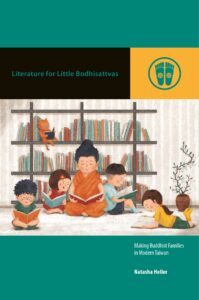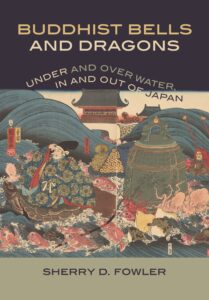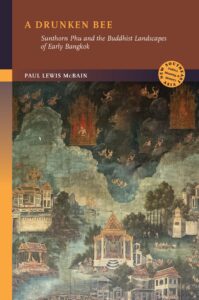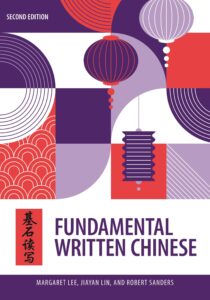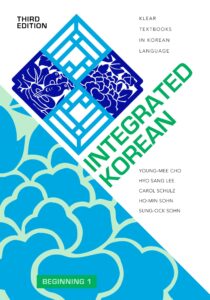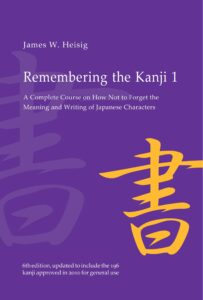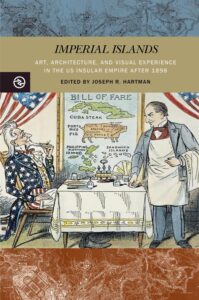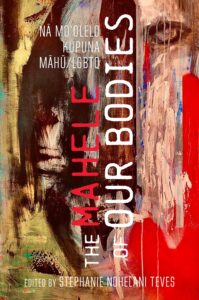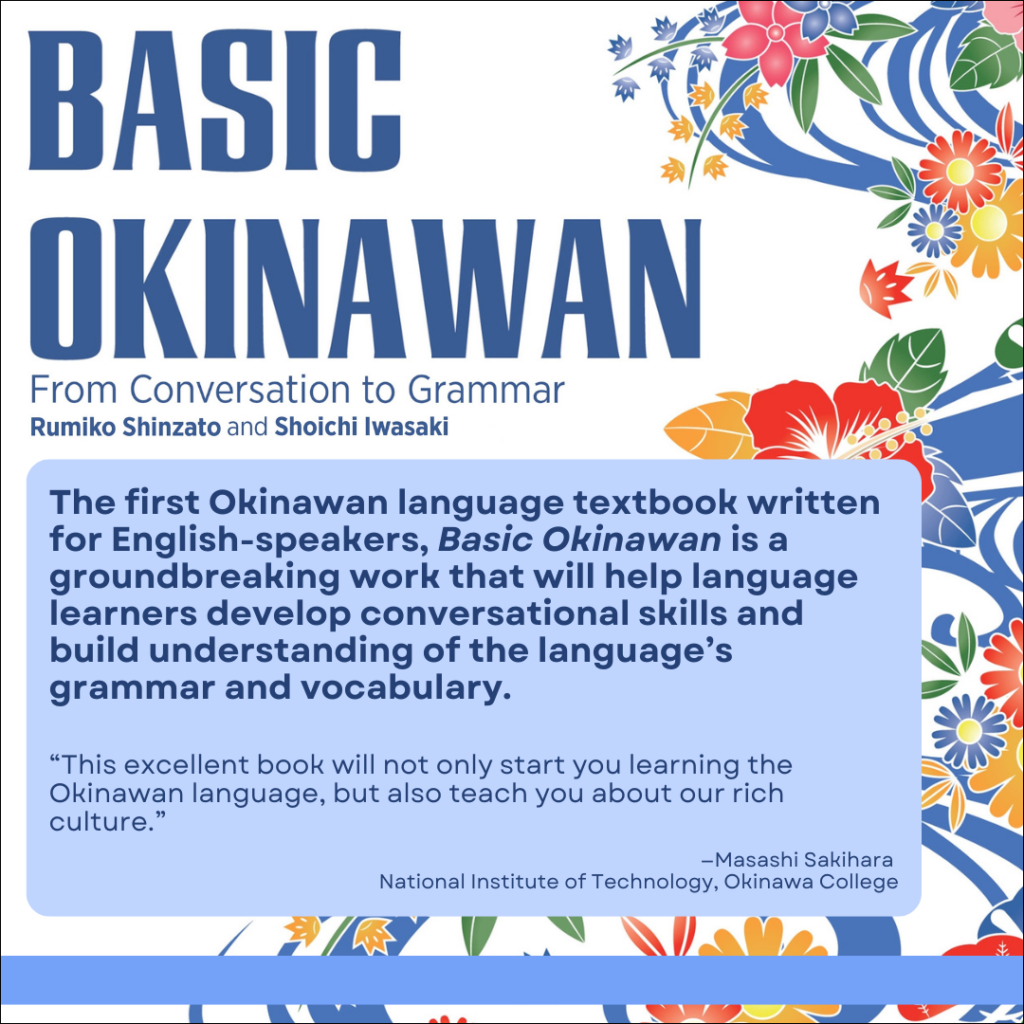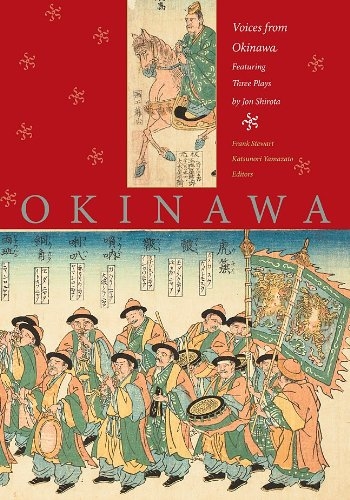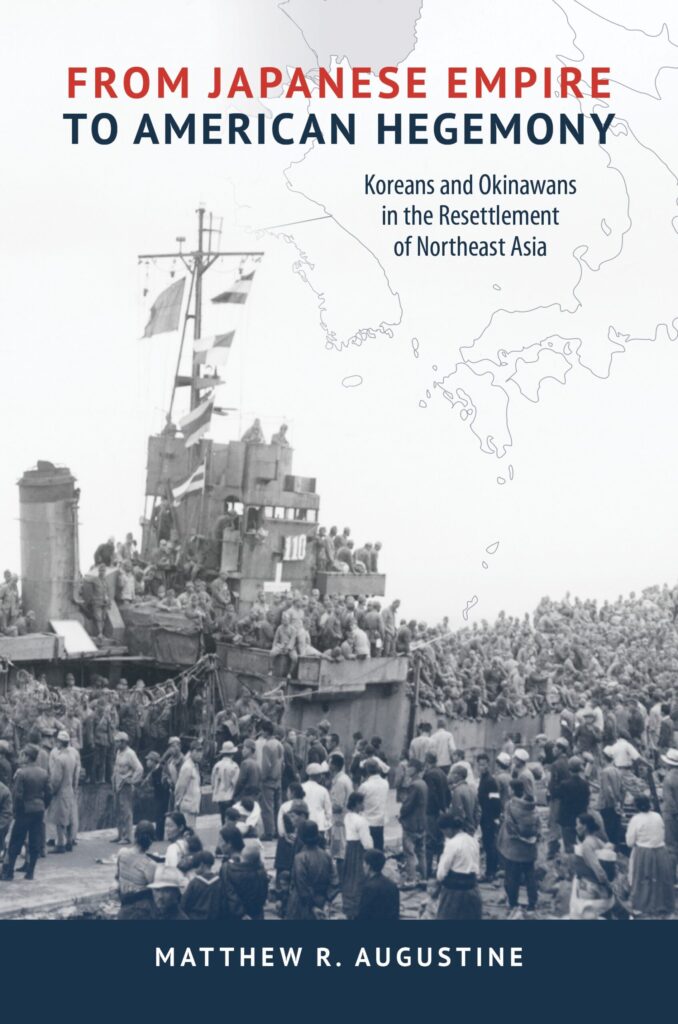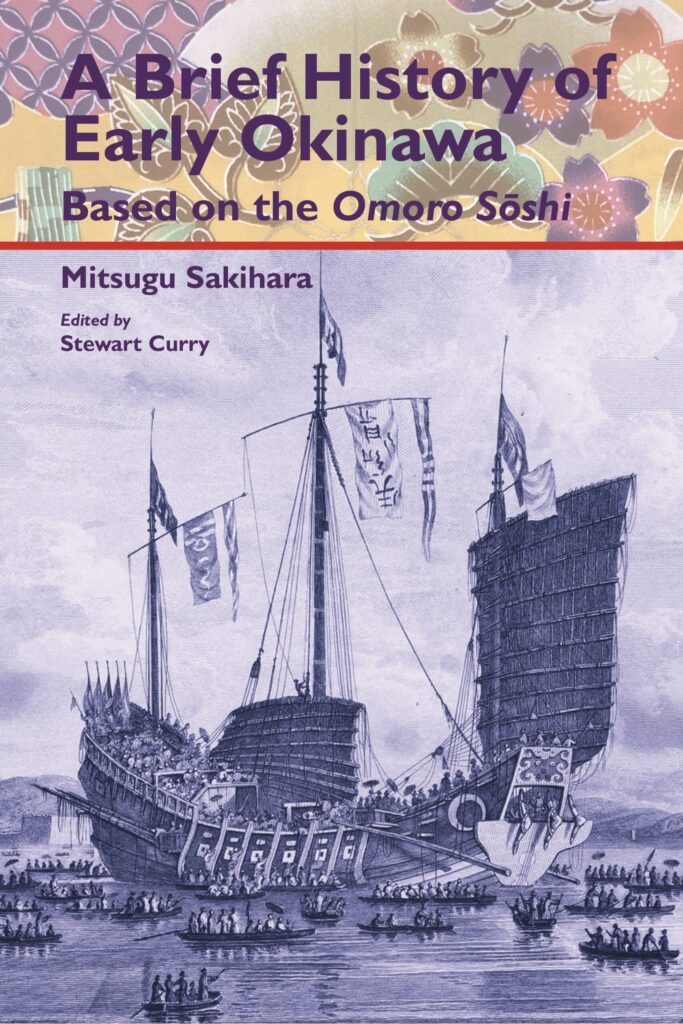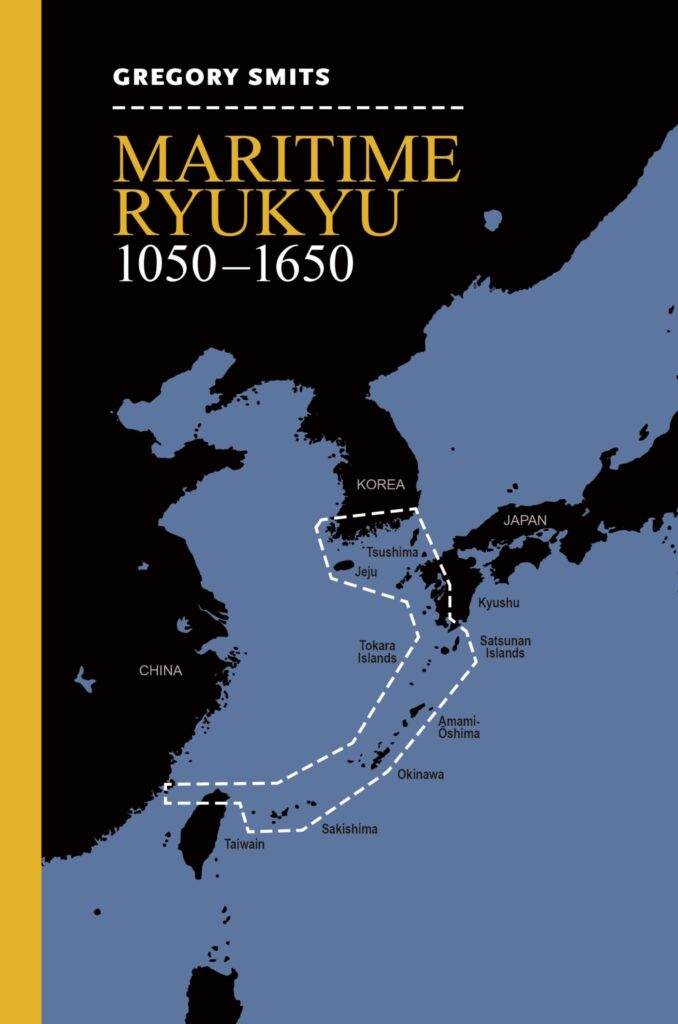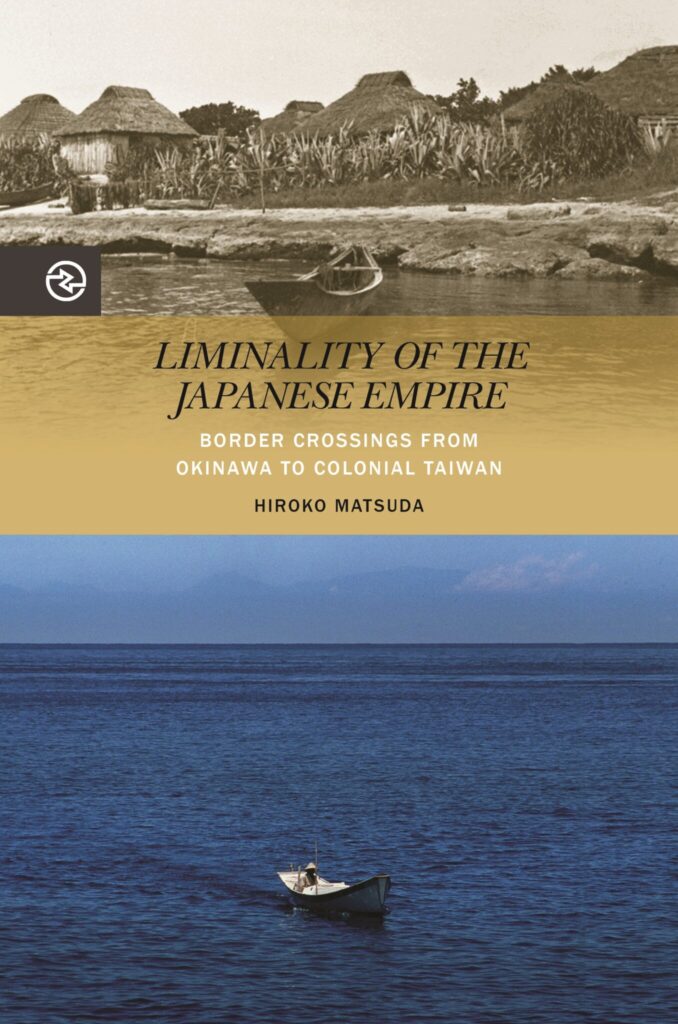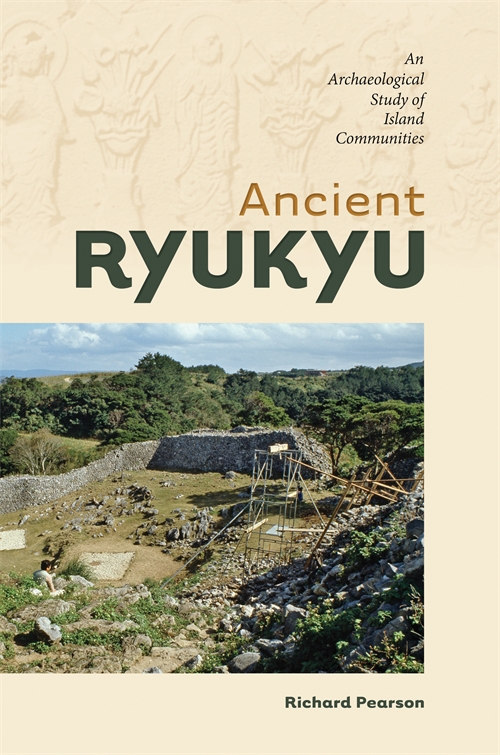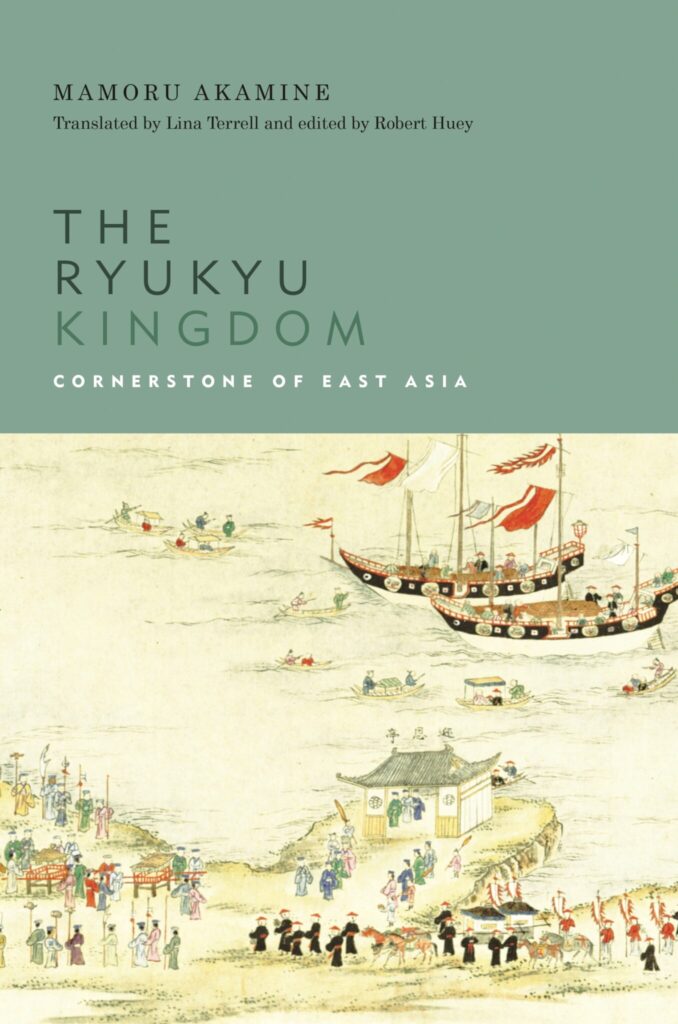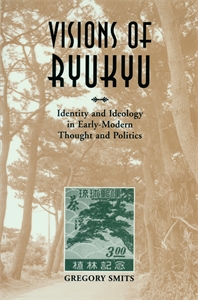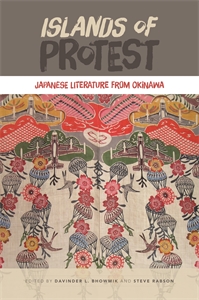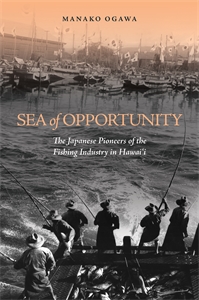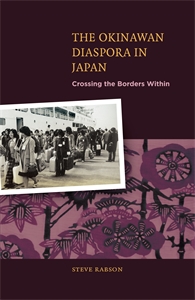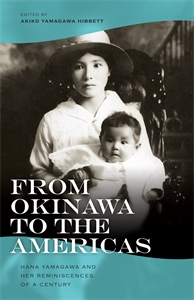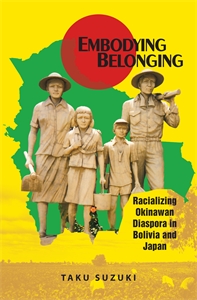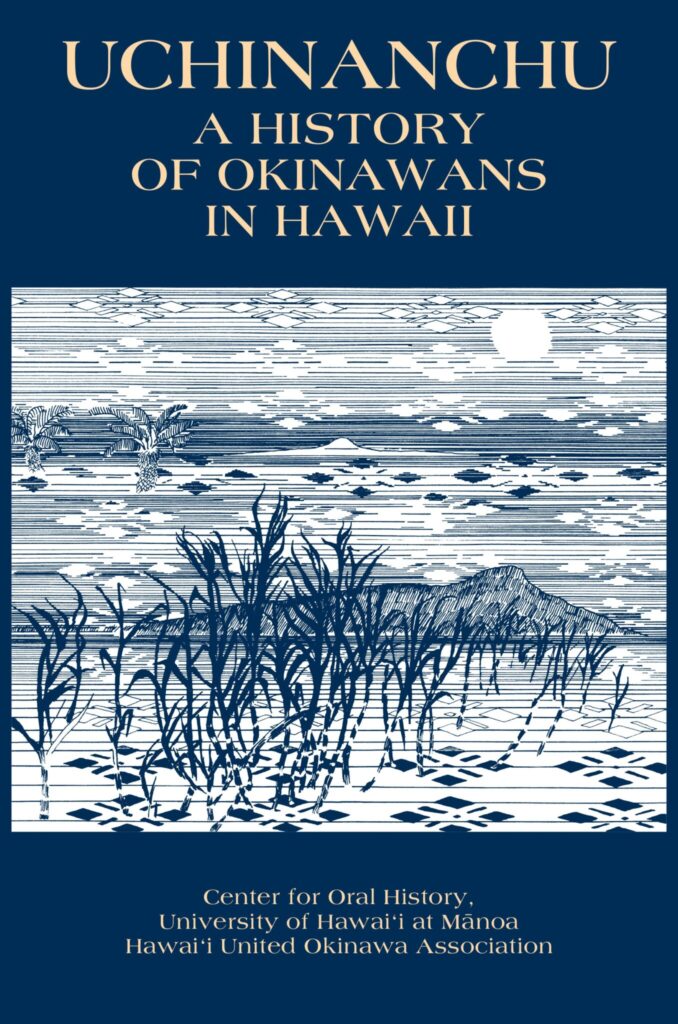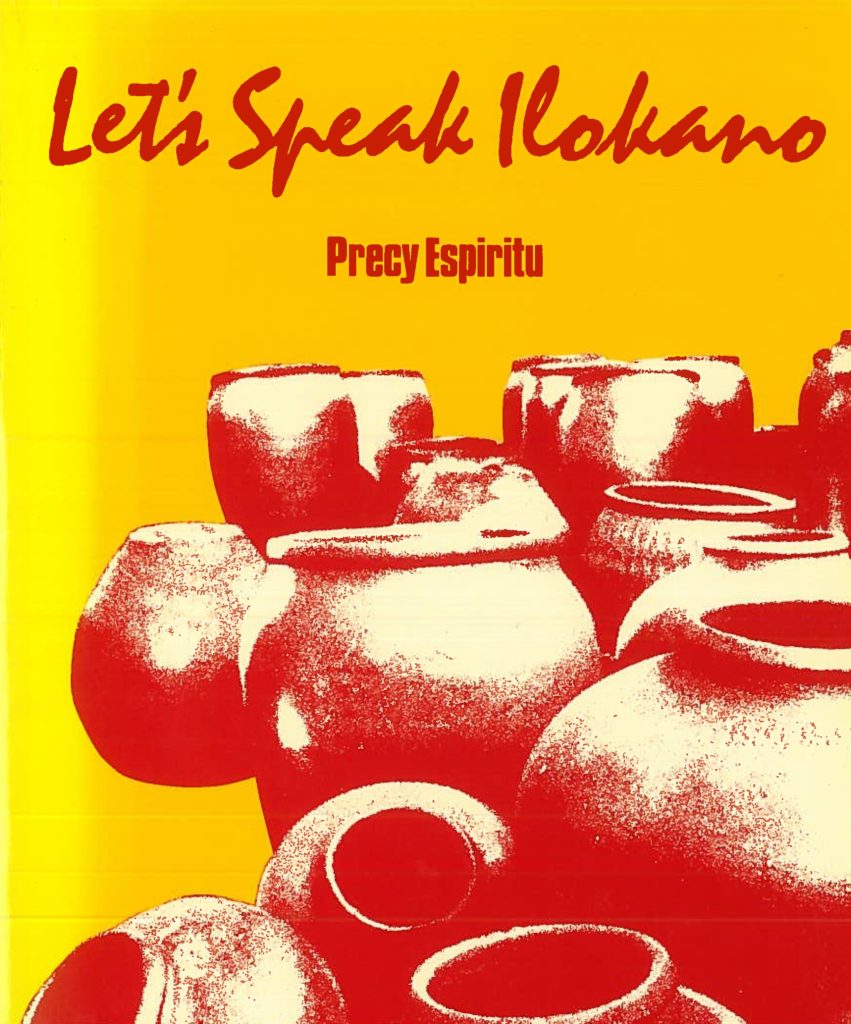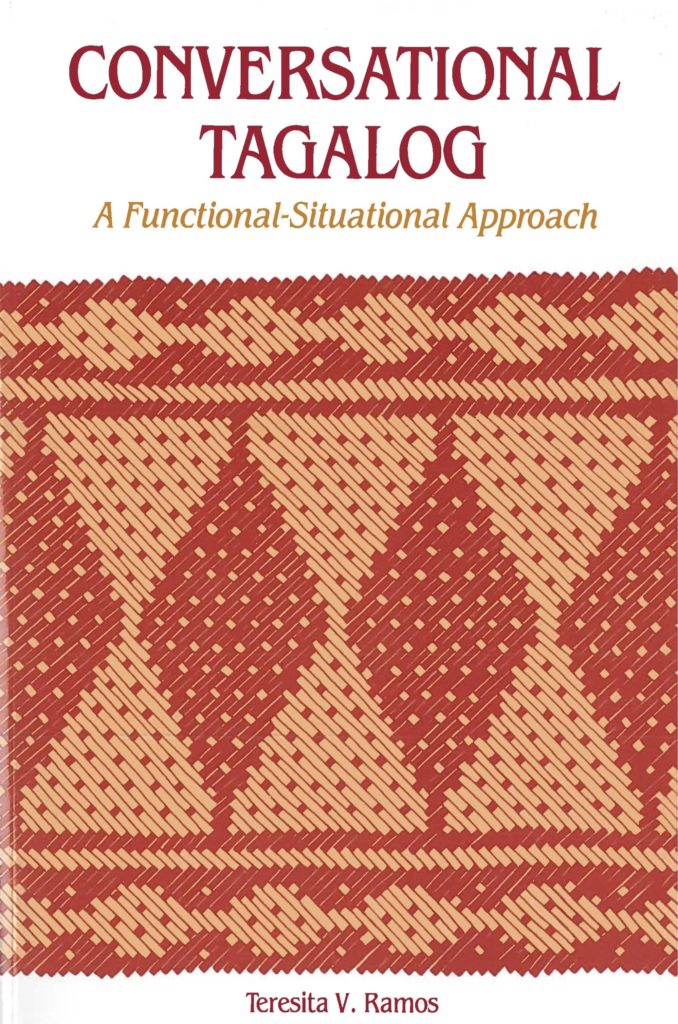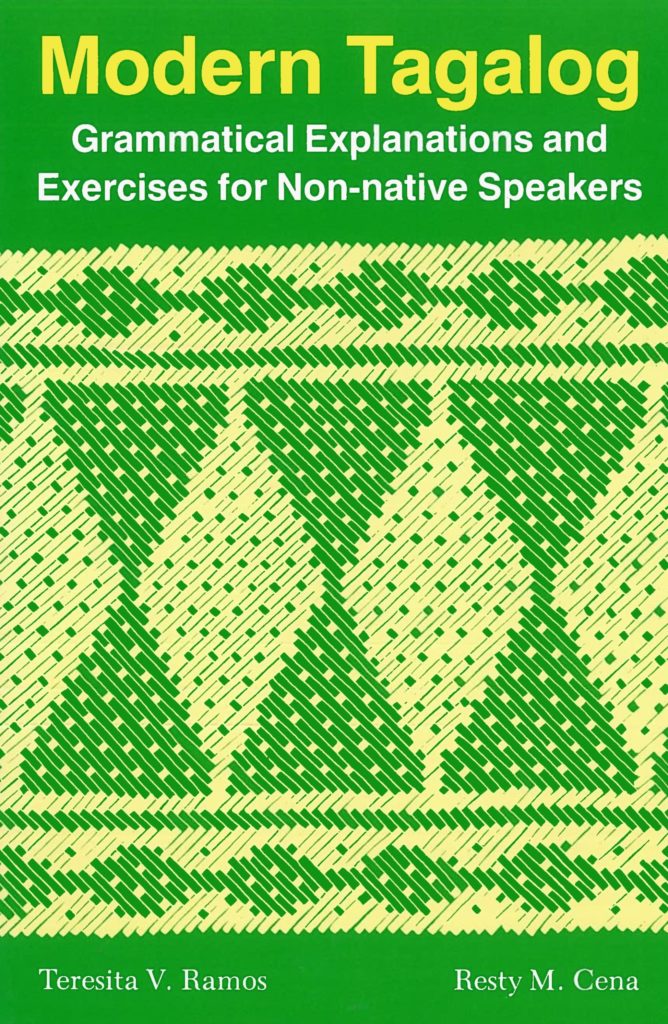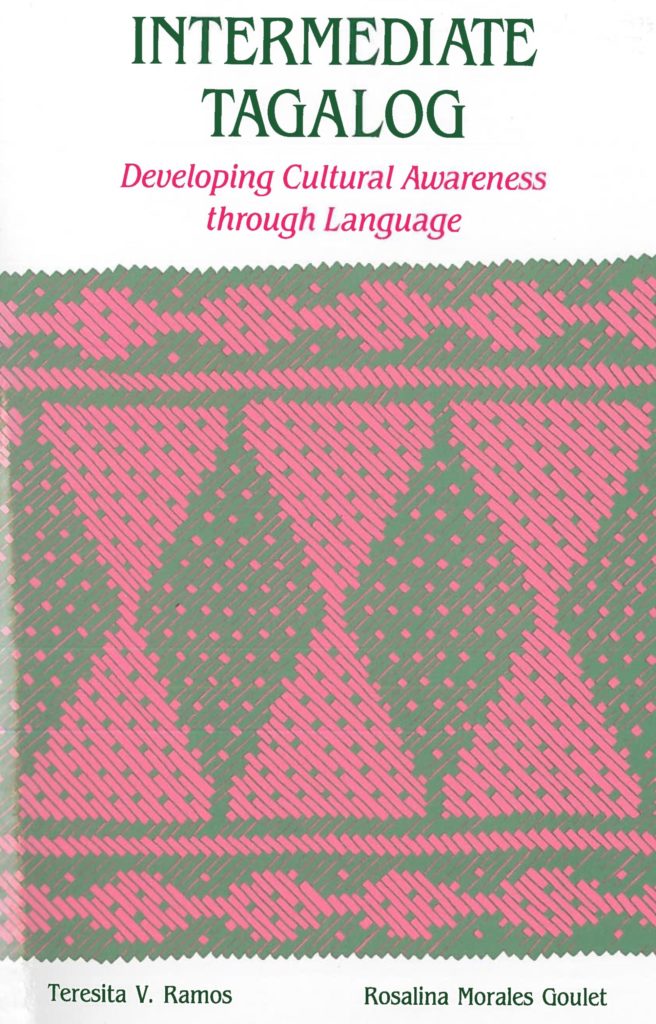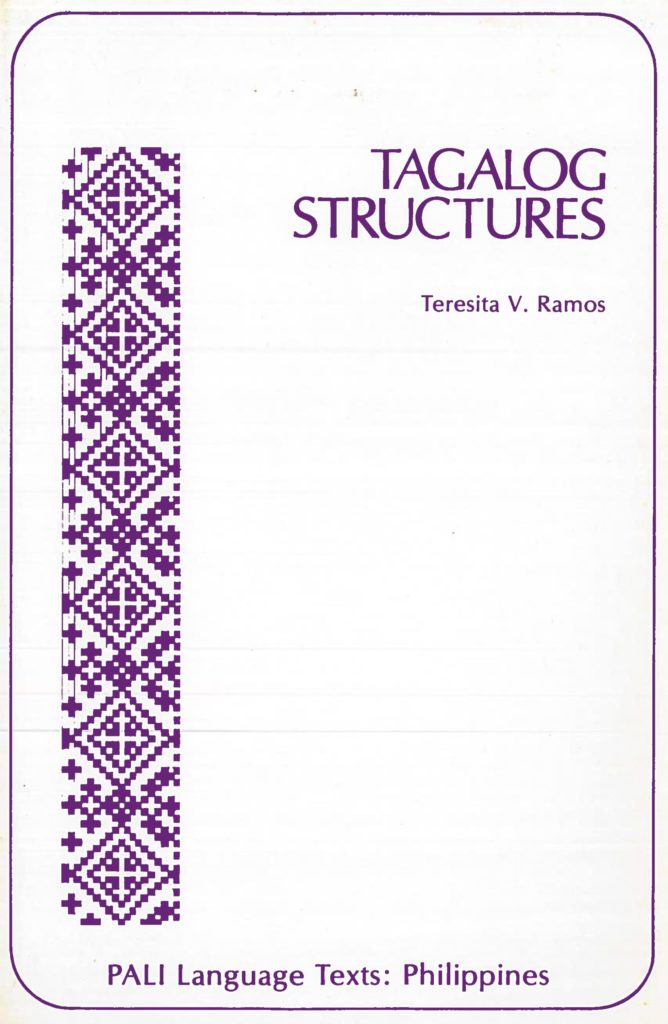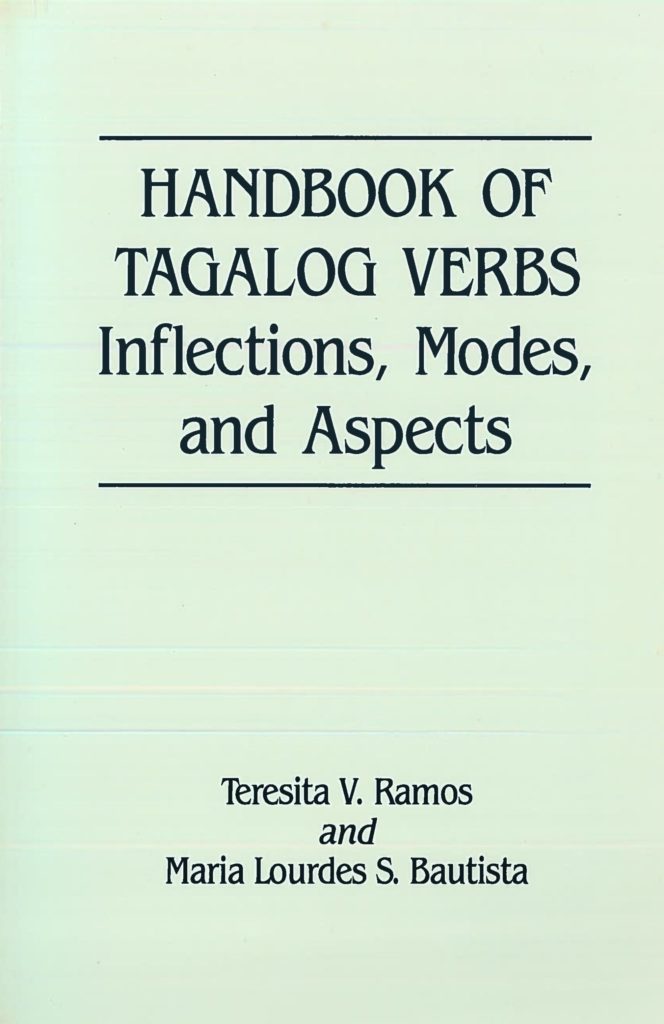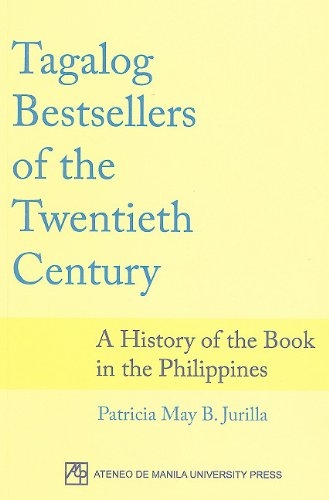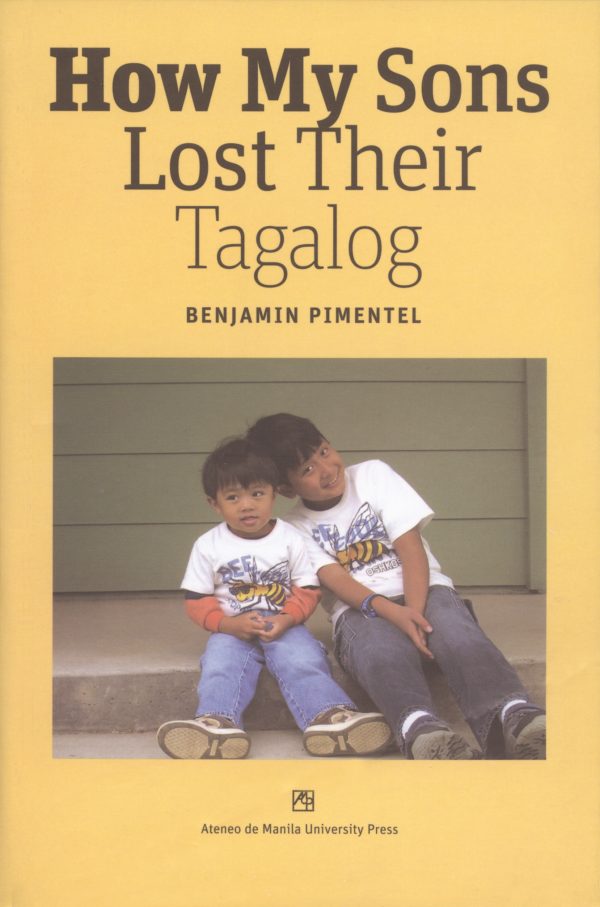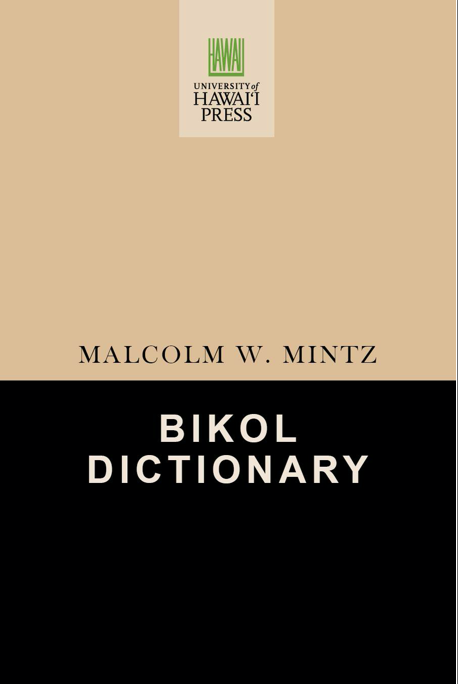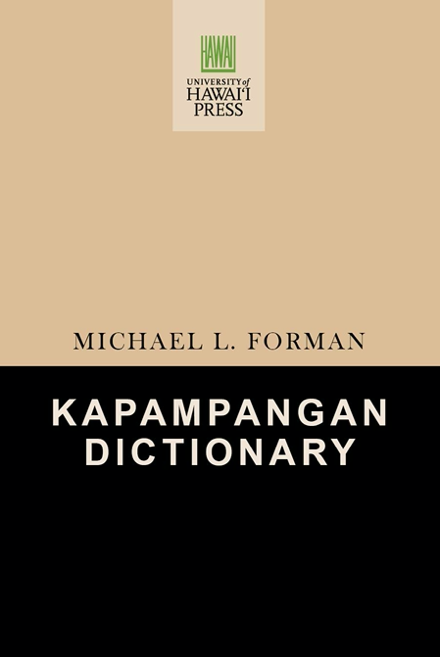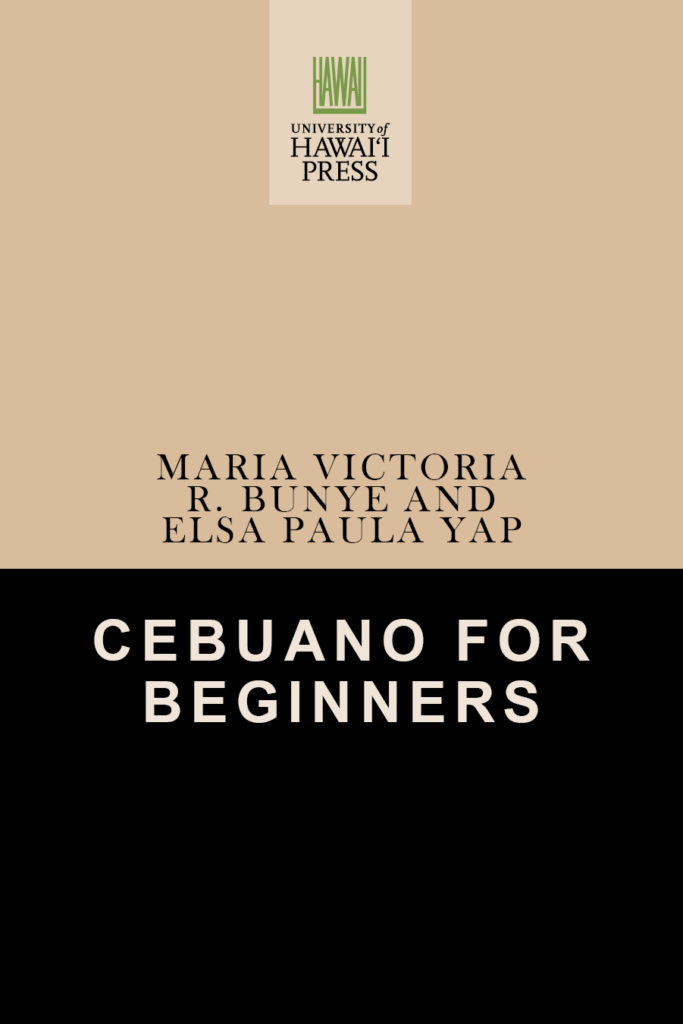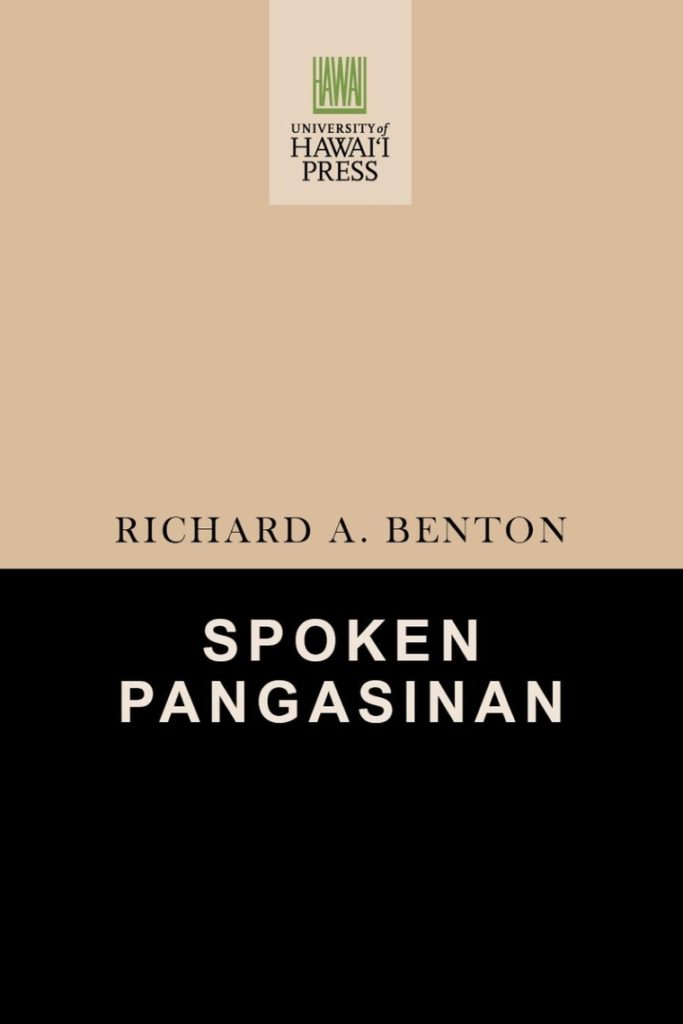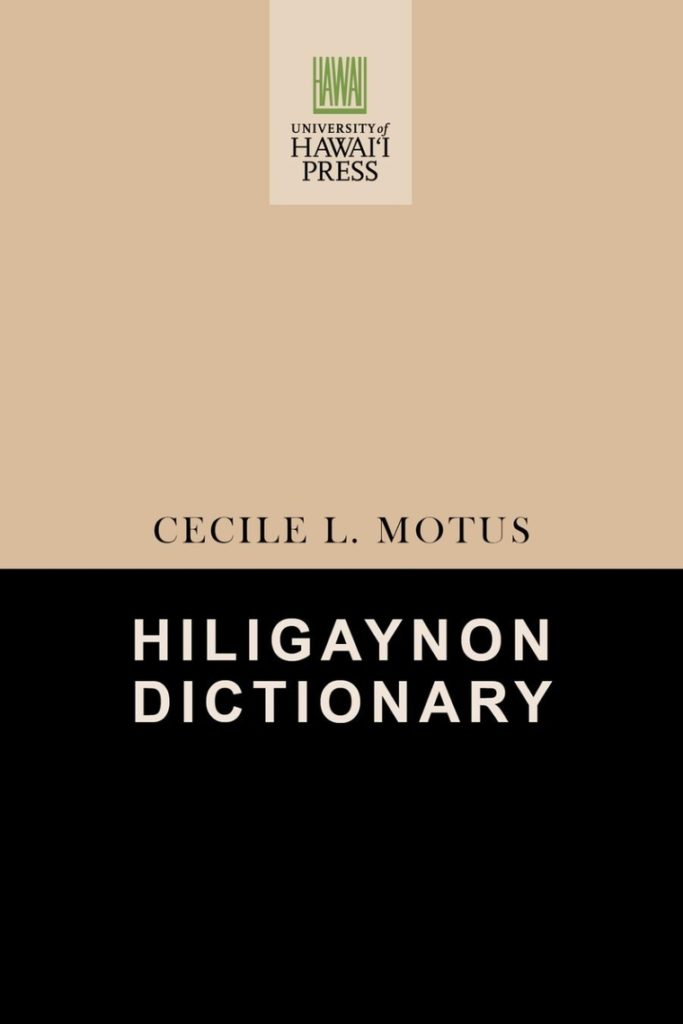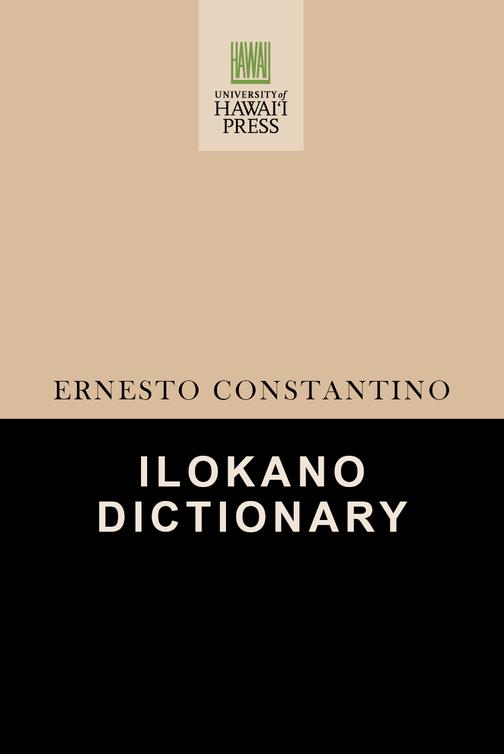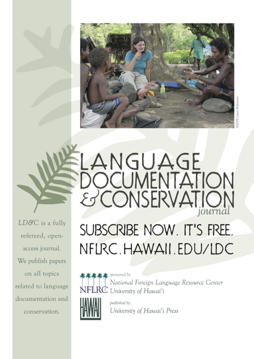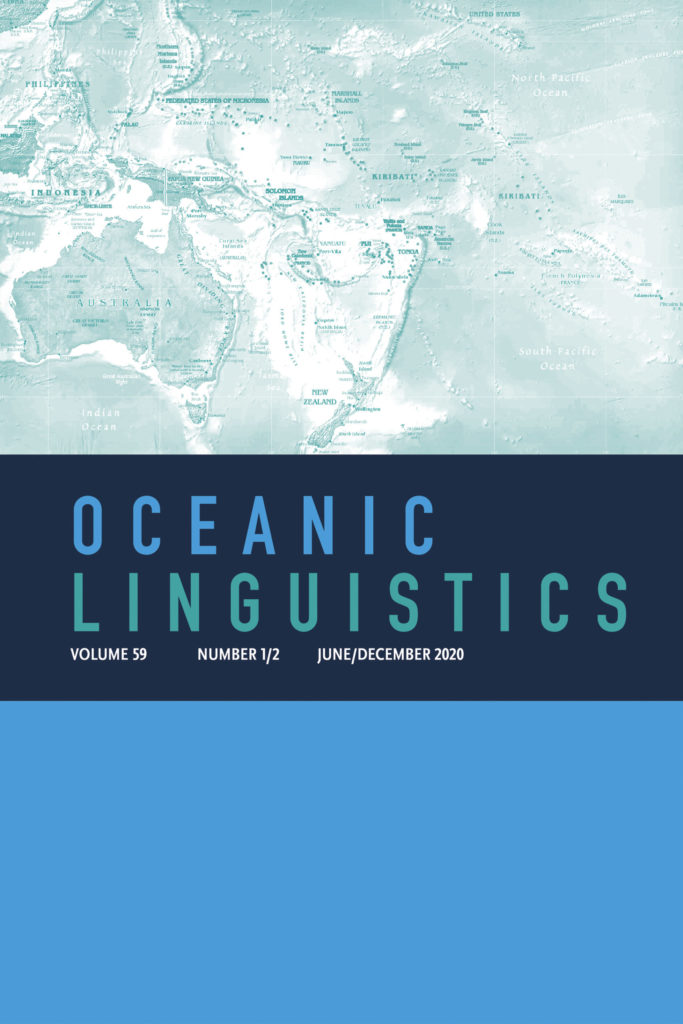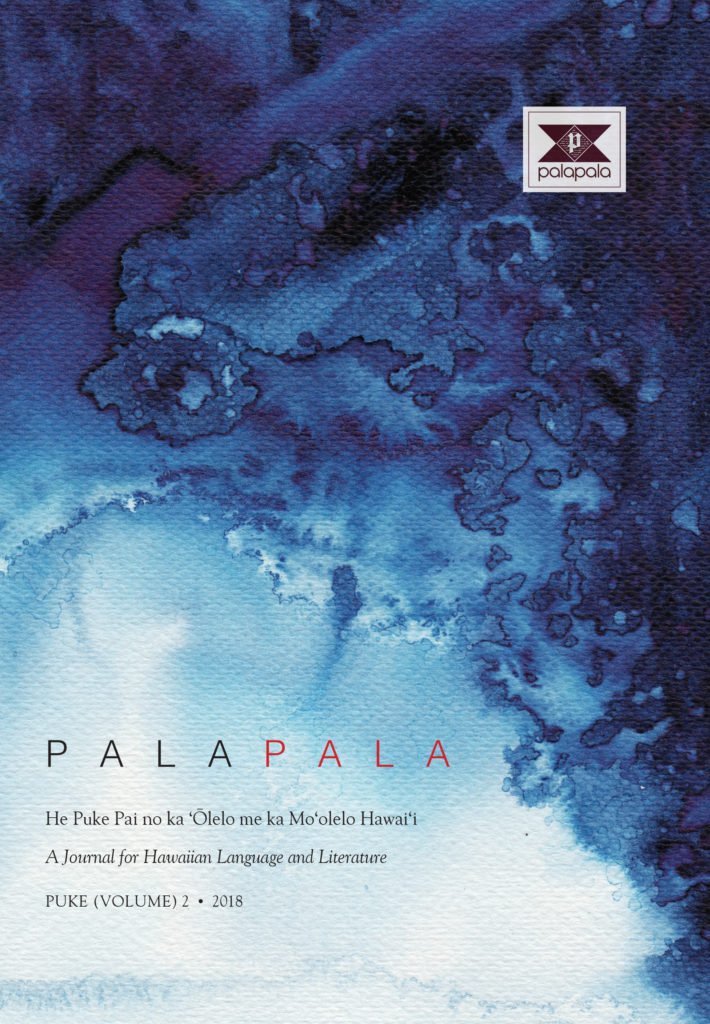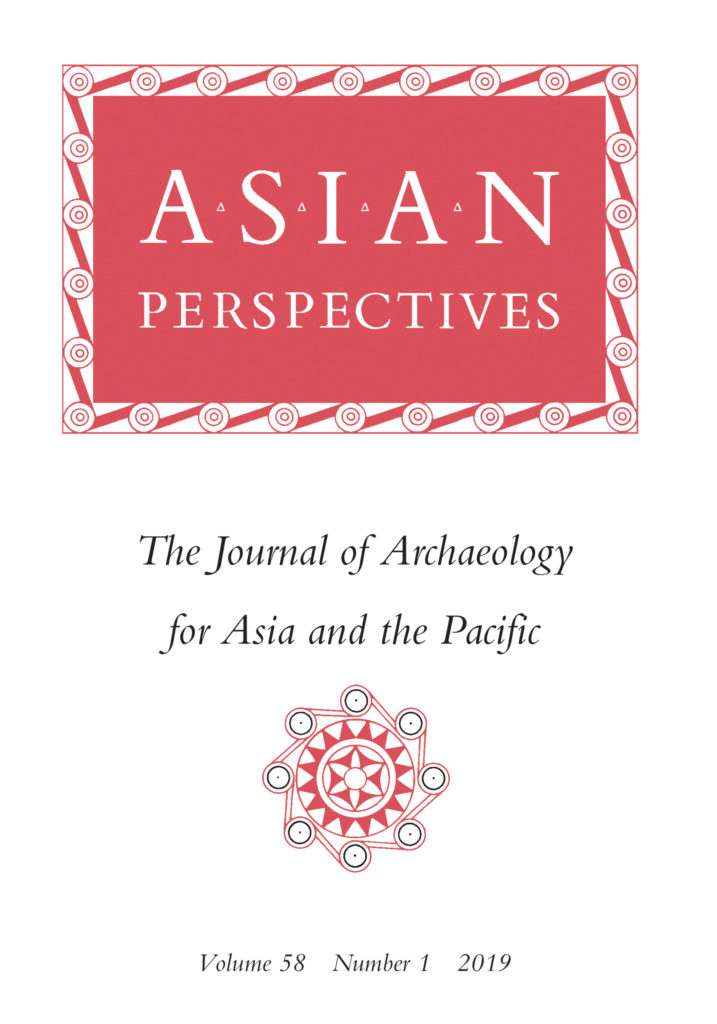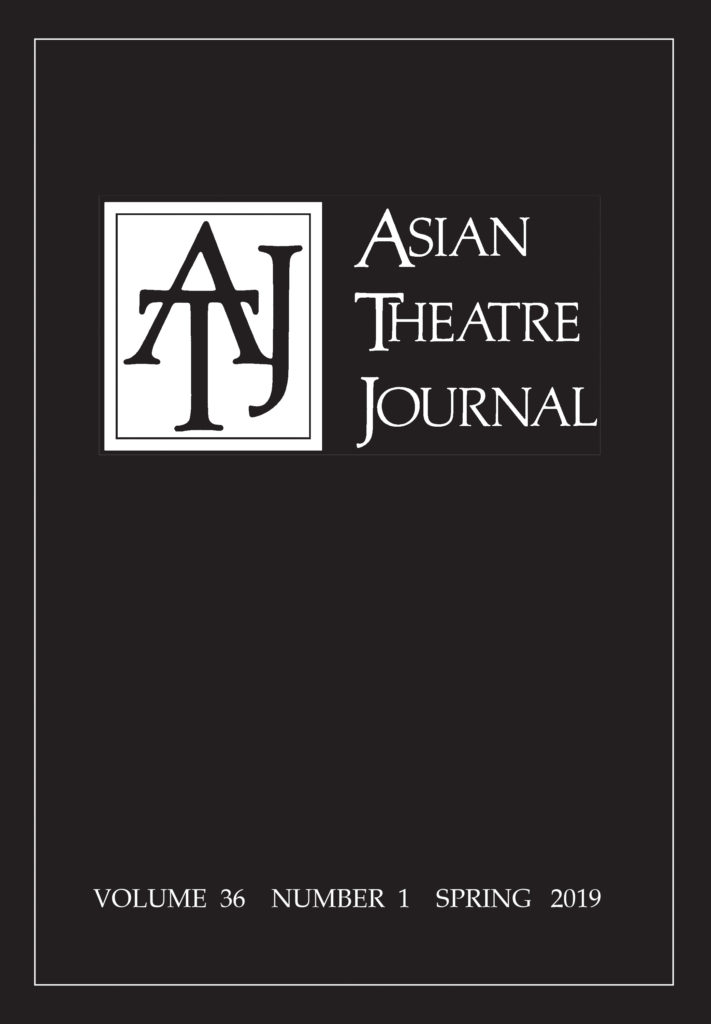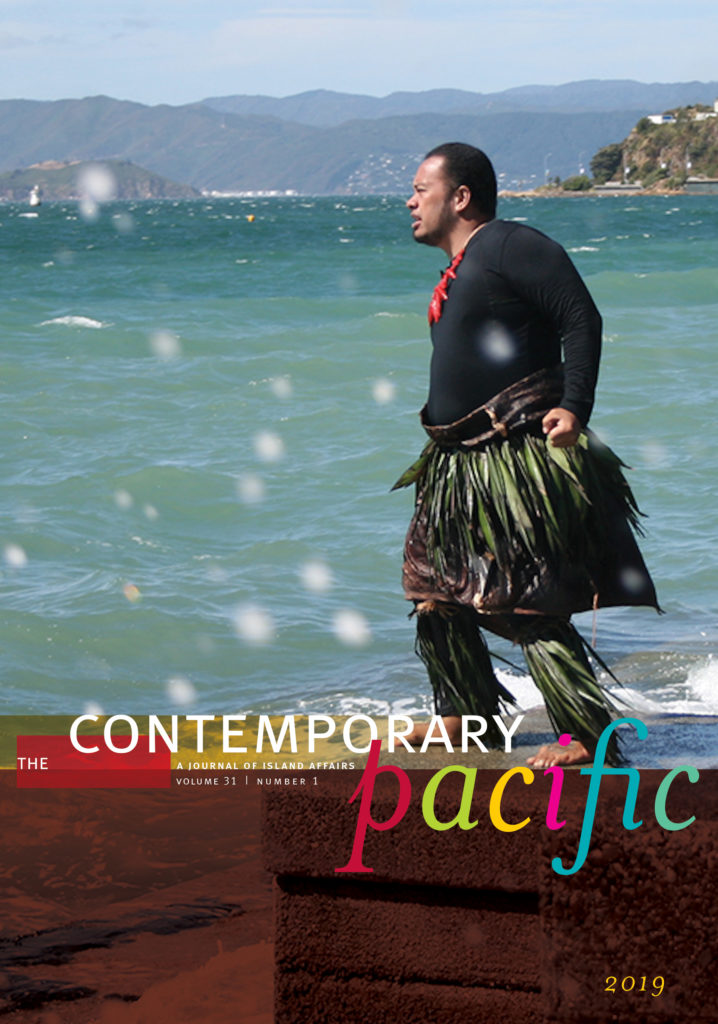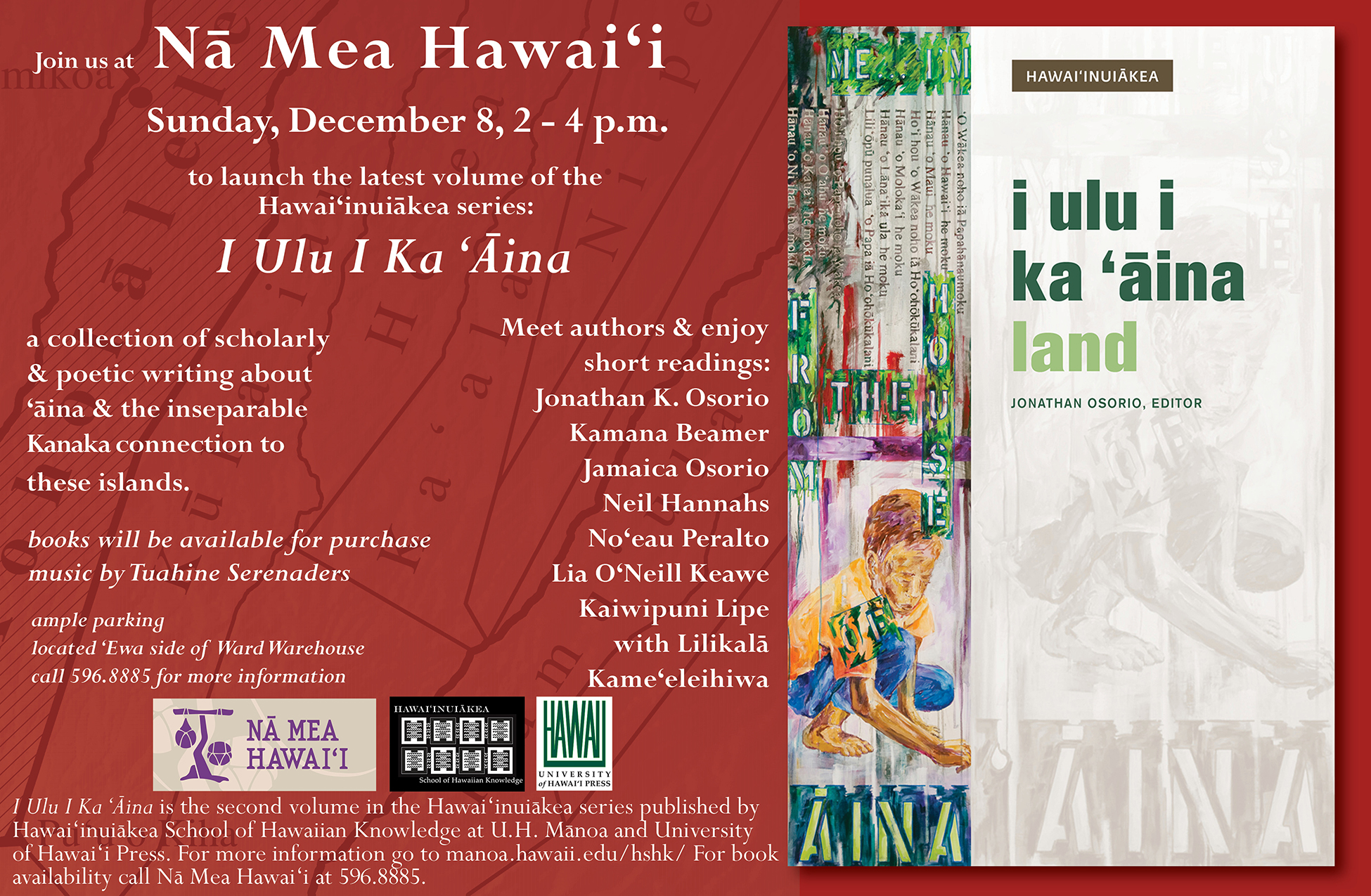November is our busiest month for conference exhibits and this year is no exception. Find our staff at these in-person events from Boston to New Orleans to San Juan!
Category: language
30% OFF OKINAWA LANGUAGE AND HISTORY

ICHARIBA CHOODEE!
Meet Niko, an exchange student, and his Okinawan host family. Together they provide a friendly introduction to Okinawan culture and language through conversations about everyday life and their adventures around Okinawa.







LOOKING FOR MORE OKINAWA LANGUAGE AND HISTORY?
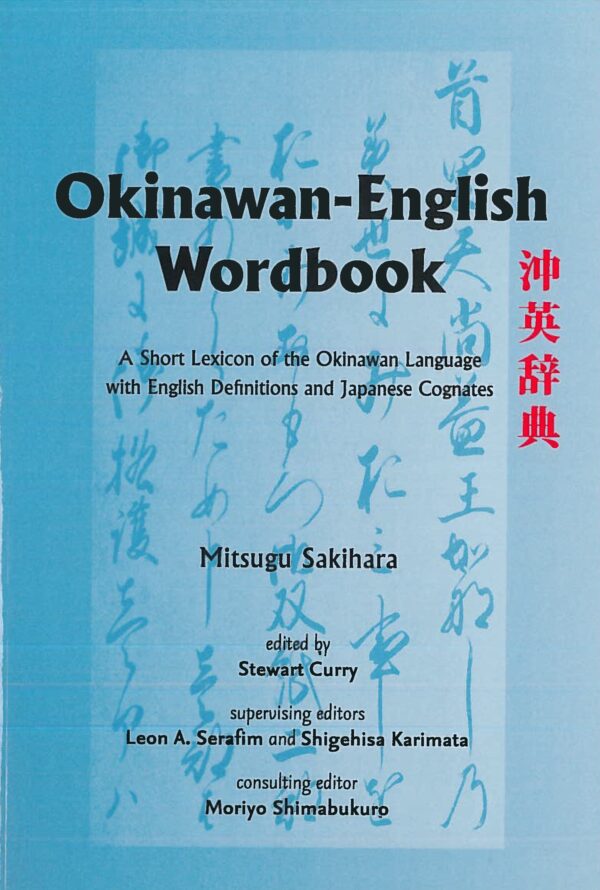
OKINAWAN-ENGLISH WORDBOOK
The Okinawan-English Wordbook, written by the late Mitsugu Sakihara, historian and native speaker of the Naha dialect of Okinawa, is a concise dictionary of the modern Okinawan language with definitions and explanations in English. The first substantive Okinawan-English lexicon in more than a century, it represents a much-needed addition to the library of reference materials on the language.
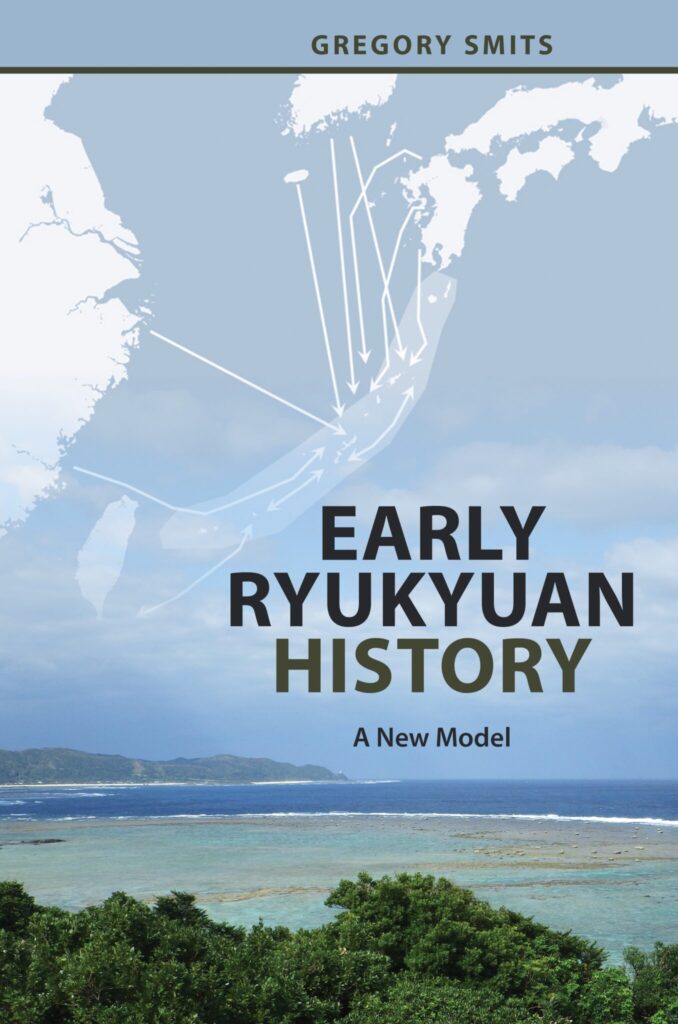
EARLY RYUKYUAN HISTORY: A NEW MODEL
The Ryukyu islands have been inhabited by humans for over 30,000 years. Their modern population, however, did not come from stone-age ancestors, nor did distinctive forms of Ryukyuan culture, such as sacred groves or stone-walled castles, emerge from within the islands. Instead, different groups of people lived in the Ryukyu islands at various points in history. Starting with the earliest extant human remains and ending with the formation of a centralized state in the early 1500s, Early Ryukyuan History traces the people, culture, technologies, goods, and networks that entered different parts of Ryukyu over time. In the process, it synthesizes decades of research in archaeology and anthropology, recent advances in genetic evidence, and conventional documentary sources to advance a new model for the early development of the Ryukyu islands, thoroughly rewriting early Ryukyuan history.
Honoring David L. Rolsten, Sonic Narratives in Modern Korea + Girls in Japanese Literature
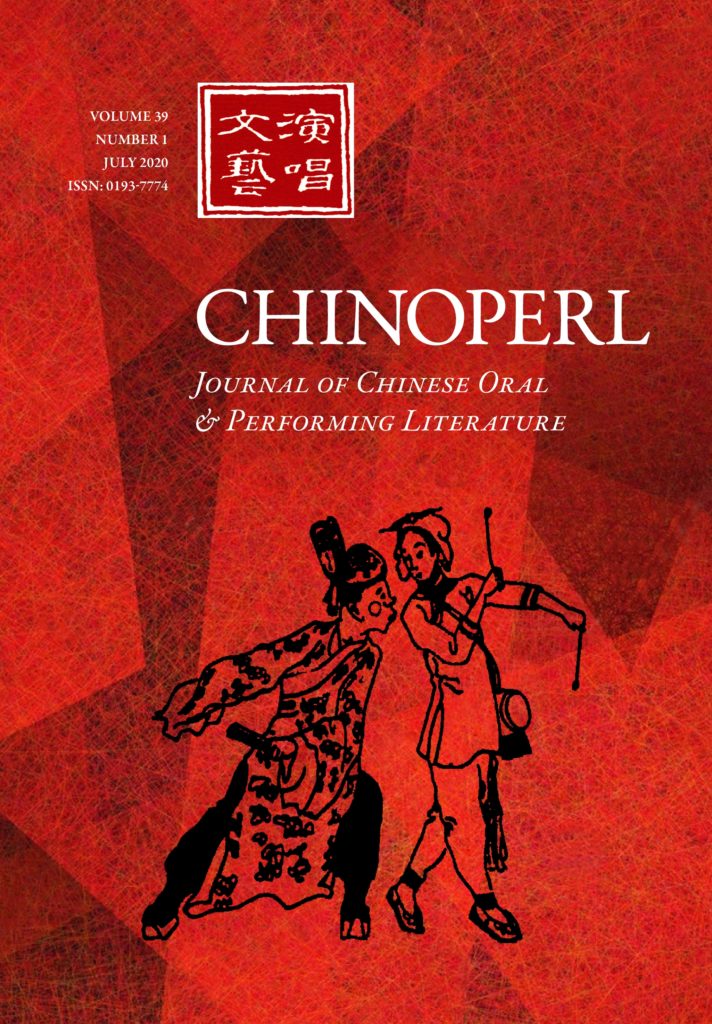
CHINOPERL
Volume 41, Number 1 (2022)
Special Issue: Honoring David L. Rolston
Associate Editor Catherine Swatek and Editorial Board Member Robert E. Hegel remember Rolston in the following introduction:
Given his publication record, one might assume that David L. Rolston is a scholar of narrative fiction. For his first major publication, David served as editor of How to Read the Chinese Novel, a milestone in providing English-language readers a glimpse of reading practices and practical criticism contemporaneous with Ming and Qing novels themselves. Not merely the compiler of the translations that comprise six of the book’s seven chapters, David’s work can be seen throughout the volume, from adding innumerable notes and explanations to the “How to Read” (dufa讀法) translations; to writing essays on the sources, history, and formal aspects of traditional fiction criticism; to compiling explanatory appendices and an extensive bibliography for each of the masterworks covered. This project was completed before David finished his Chicago doctorate.
Find more special features and articles at Project MUSE.
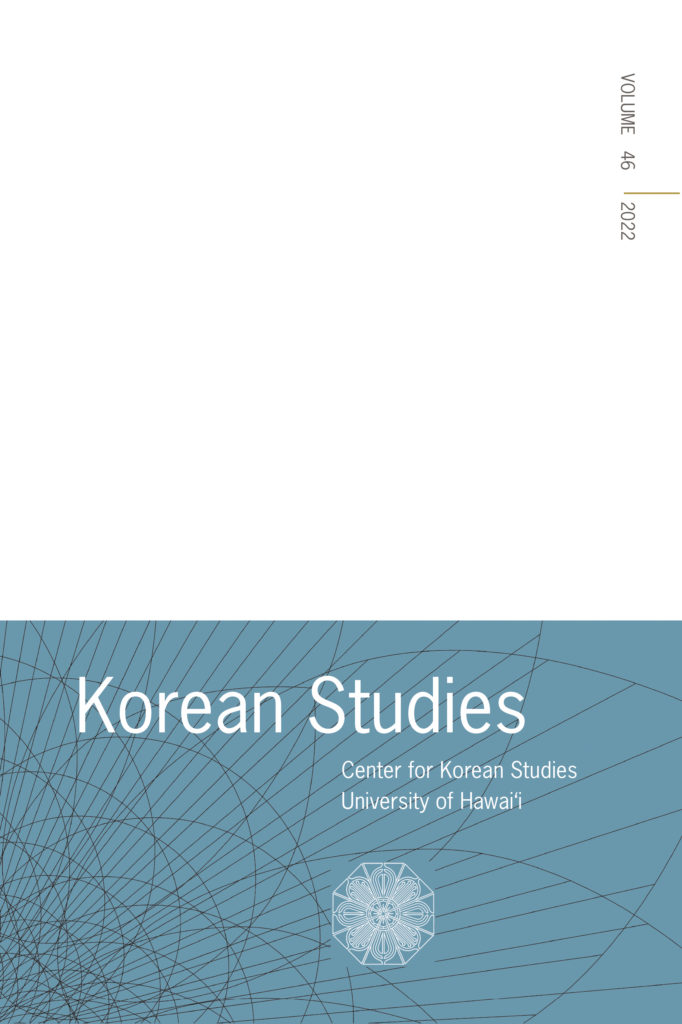
Korean Studies
Volume 46, Number 2 (2021)
Special Section: “Music That Moves: Sonic Narratives in Modern Korea”
This Special Section features discussion on 1960’s protect songs to K-pop idols. Editor Cheehyung Harrison Kim notes:
Culture is at once a medium through which we make sense of the
world (for good or ill), a field of empowerment for the underprivileged, and a source of hegemony for the state and corporations. This cultural complexity is discernible in South Korea’s current political landscape, and it is also the very theme explored in this volume’s Special Section “Music That Moves: Sonic Narratives in Modern Korea,” dexterously guest edited by Dafna Zur and Susan Hwang. In Katherine Lee’s elegant piece on the World Vision Korean Orphan Choir, musical performance is at the heart of transnational religiosity and Cold War politics. Transnationalism is also the framework of Dafna Zur and Yoon Joo Hwang’s original research on children’s music during the colonial period, when the merger between western style of songwriting and Korean emotionality unevenly transpired in the genre of tongyo. Music as a field of popular resistance is the core of Pil Ho Kim’s audacious piece on South Korea’s 1960s protest songs, which, for Kim, is a pre-minjung expression of the multitude. Susan Hwang’s emotionally prodigious article, too, is on the resistive and resilient aspect of music, which, in the aftermath of the 1980 Kwangju Uprising, served as a crucial repertoire for the counter-state. From the opposite side, music as practice of hegemonic efficacy is dealt with in Alexandra Leonzini and Peter Moody’s intricate article on North Korea’s sonic culture, as it is done in Roald Maliangkay’s perspicacious study on South Korea’s use of K-pop in marketing. Whether the hegemonic entity is the state or a corporation, music is, in these two articles, a potent medium of influence.
Find more special features and articles at Project MUSE.
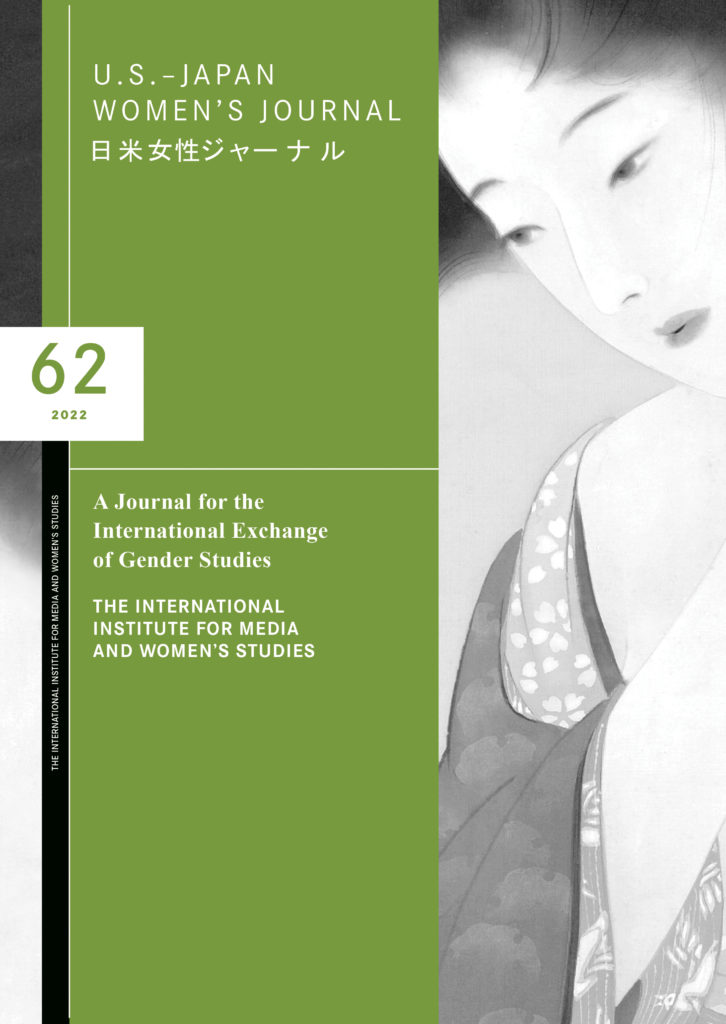
U.S. Japan Women’s Journal
Volume 62 (2022)
Special Issue: Girls and Literature
As expressed by authors Hiromi Tsuchiya Dollase and Wakako Suzuki in the introduction:
The literary genre shōjo shōsetsu emerged in conjunction with the rise of girls’ education in the Meiji period. Early stories were meant to educate readers to become “good wives and wise mothers.” Accordingly, shōjo shōsetsu endured restrictions on the narratives they could tell, limiting the breadth of their authors’ artistic and literary possibilities. Shōjo shōsetsu evolved and diversified in the postwar era and, especially starting in the 1980s, became a means for young female authors to empower themselves. Shōjo shōsetsu have declined in popularity recently as readers consume stories more broadly across media and genres. The goal of this special issue is to contemplate the function, meanings, and problems of shōjo shōsetsu. Instead of merely confining ourselves to a rigid, unified notion of shōjo shōsetsu, we consider shōjo characters from the wider literary world, investigating their roles, functions, and cultural implications.
The new issue includes the following articles:
Introduction: Girls and Literature
イントロダクション:少女と文学
Hiromi Tsuchiya Dollase and Wakako Suzuki
Trees That Grow Kimono (1895)
着物のなる木
Wakamatsu Shizuko 若松賤子
Translated by Wakako Suzuki
Kawabata Yasunari’s The Scarlet Gang of Asakusa as the
Territory of the Dispossessed Girl
追い立てられた少女の領域としての『浅草紅団』
Barbara Hartley
Love and Sexuality in Postwar Girls’ Culture: Examining
Tomishima Takeo’s Junior Fictiona
戦後少女文化における恋愛と性愛:富島健夫の
ジュニア小説をめぐって
Hiromi Tsuchiya Dollase
Countdown to the Demise of Girls’ Novels
少女小説のカウントダウンの開始
Kume Yoriko 久米依子
Translated and Introduced by Barbara Hartley
Find more articles at Project MUSE.
New Journal Issues: Aloha Shirt Aesthetics, Patterns of Mortuary Practice in Vanuatu, Taiwan Sugar in the 1600s + More
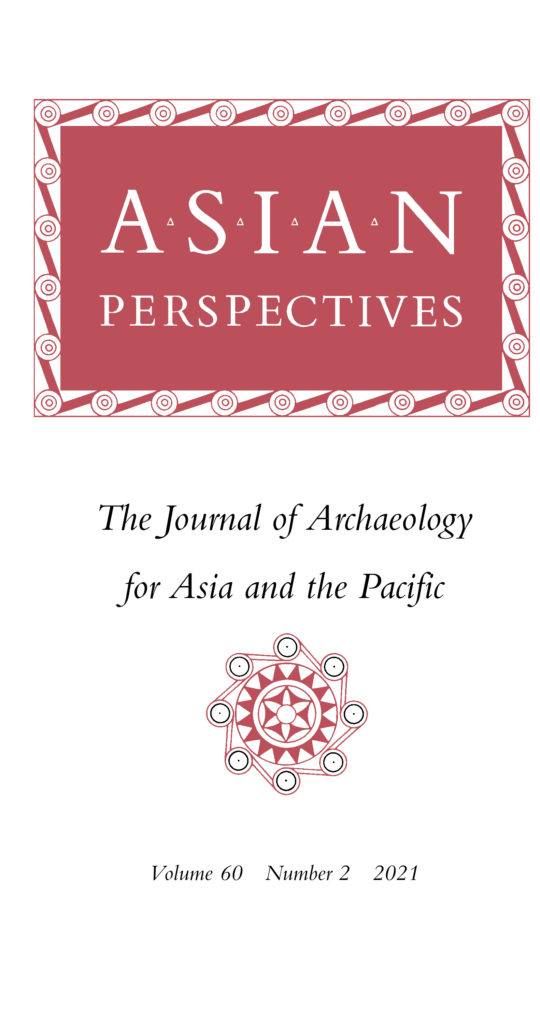
Asian Perspectives
Volume 61, Number 1 (2022)
The new issue includes the following articles and reviews:
Lakheen-Jo-Daro, an Indus Civilization Settlement at Sukkur
in Upper Sindh (Pakistan): A Scrap Copper Hoard and
Human Figurine from a Dated Context
Paolo Biagi and Massimo Vidale
The Hamin Mangha Site: Mass Deaths and Abandonment
of a Late Neolithic Settlement in Northeastern China
Yawei Zhou, Xiaohui Niu, Ping Ji, Yonggang Zhu, Hong Zhu, and
Meng Zhang
Early Metal Age Settlement at the Site of Palemba, Kalumpang,
Karama Valley, West Sulawesi
Anggrreani
Patterns of Mortuary Practice over Millennia in Southern Vanuatu,
South Melanesia
Frédérique Valentin, Wanda Zinger, Alison Fenwick, Stuart Bedford,
James Flexner, Edson Willie, and Takaronga Kuautonga
Find more research articles and reviews at Project MUSE.
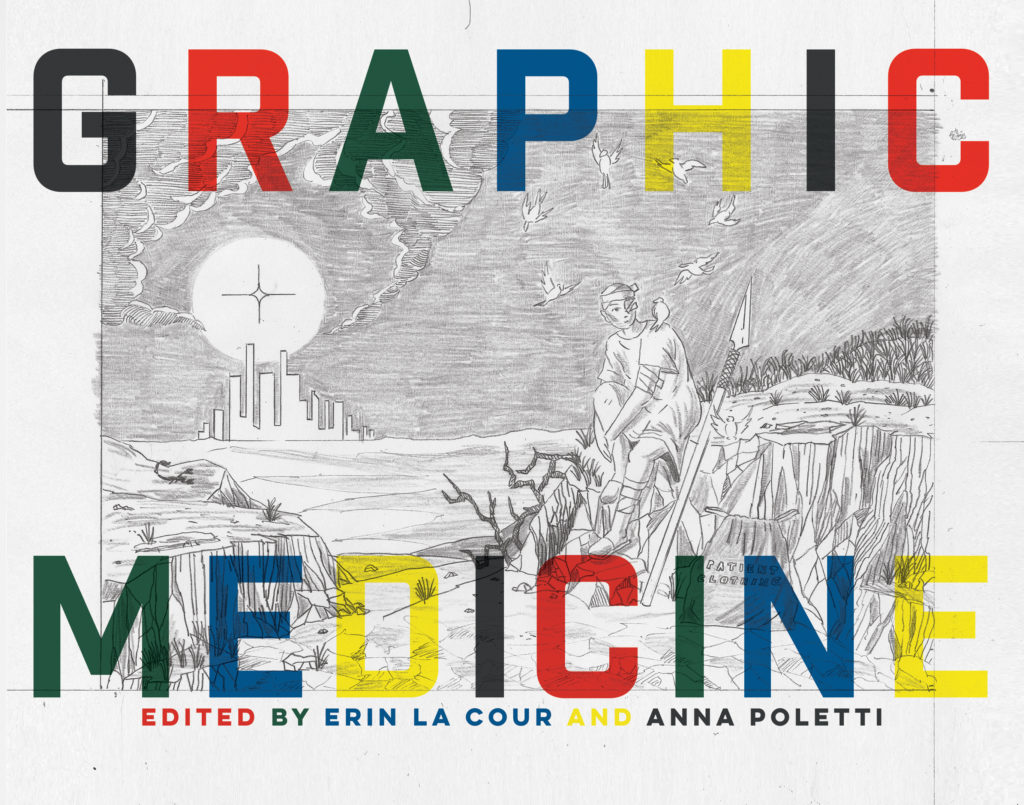
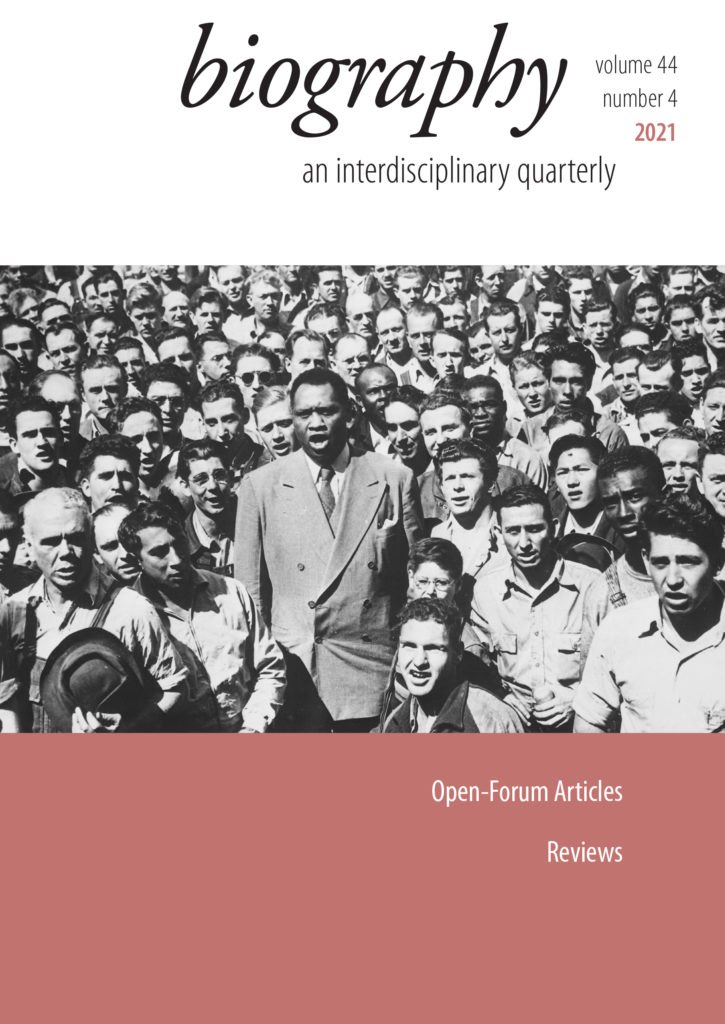
Biography
Volume 44, Issues 2 & 3 (2021)
Special Double Issue: Graphic Medicine
Graphic Medicine’s Possible Futures: Reconsidering Poetics and Reading
Erin La Cour and Anna Poletti
Conflict or Compromise?: An Imagined Conversation
with John Hicklenton and Lindsay Cooper about
Living with Multiple Sclerosis
John Miers
Out of Sync: Chronic Illness, Time, and Comics Memoir
Jared Gardner
Face as Landscape: Refiguring Illness, Disability,
and Disorders in David B.’s Epileptic
Erin La Cour
Graphic Confessions and the Vulnerability Hangover
from Hell
Safdar Ahmed
Drawn to History: Healing, Dementia, and the Armenian
Genocide in the Intertextual Collage of Aliceheimer’s
Crystal Yin Lie
Find more at Project MUSE.
Biography
Volume 44, Issue 4 (2021)
Open Forum Articles
Reviews
Editor Craig Howes embraces this volume as he explains:
“The latest issue of Biography qualifies as special because of its ordinariness. After a four-installment run featuring two special issues, an inaugural Forum, and the Annual Bibliography and International Year in Review, we now return to our regularly scheduled programming. Articles and book reviews—that’s all!
But the table of contents for this issue speaks to what has distinguished Biography for decades as a quarterly. First, the articles. Their geographic, historic, linguistic, and generic range is in keeping with our international and interdisciplinary profile. American celebrity biographies and philosophy, twentieth-century Indian regional autobiography, modernist Austrian psychoanalytic biography, post-WWII German-Romanian autofiction, contemporary Palestinian auto/biographical texts—our pages map out and tell the stories of the field.”
Find more articles and reviews at Project MUSE.
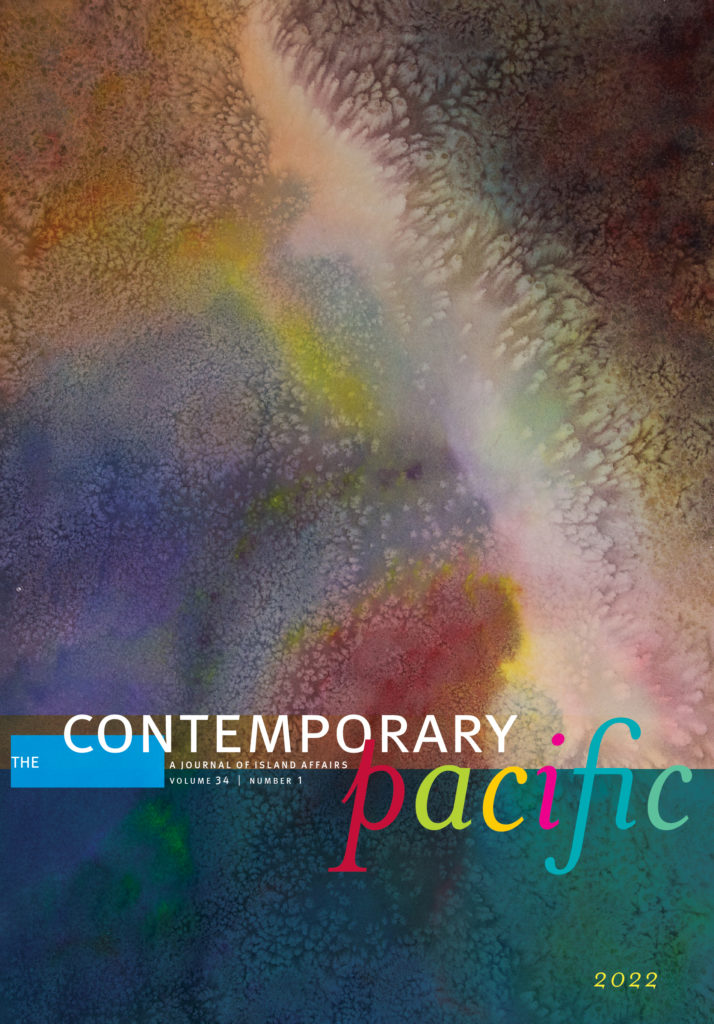
The Contemporary Pacific
Volume 34, Issue 1 (2022)
The new issue includes the following articles, dialogues, political, media, and book reviews.
One Salt Water: The Storied Work of Trans-Indigenous Decolonial Imagining with West Papua
Bonnie Etherington
Making Sartorial Sense of Empire: Contested Meanings
of Aloha Shirt Aesthetics
Christen T Sasaki
The Compensation Page: News Narratives of Public Kinship in Papua New Guinea Print Journalism
Ryan Schram
“We Are So Happy EPF Came”: Transformations of Gender in Port Moresby Schools
Ceridwen Spark and Martha Macintyre
Pacific People Navigating the Sacred Vā to Frame Relational Care: A Conversation between Friends across Space and Time
Silia Pa‘usisi Finau, Mele Katea Paea, and Martyn Reynolds
Find more articles, dialogues, political, media, and book reviews at Project MUSE.
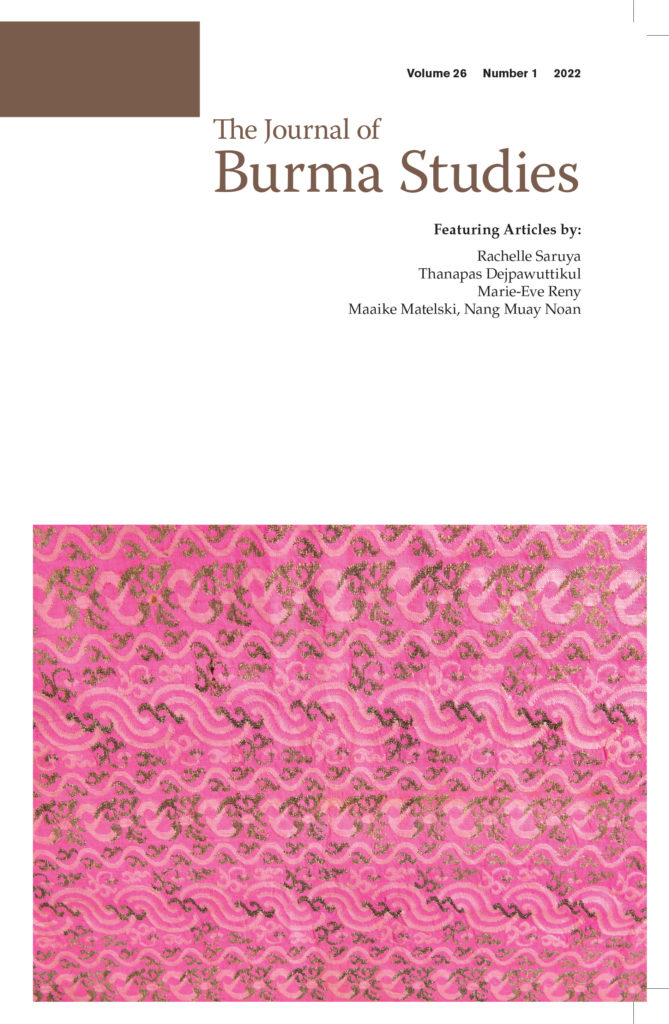
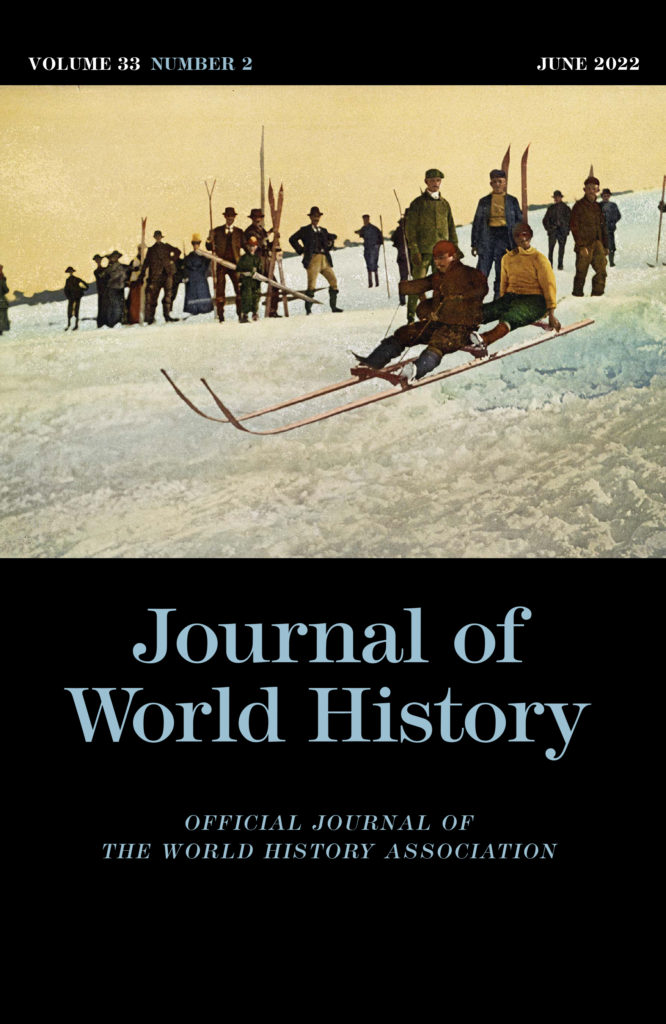
The Journal of Burma Studies
Volume 26, Number 1 (2022)
Ritual and Play in Buddhist Nun-Making: Girlhood,
Nunhood, and the Shaping of the “Little Teacher” in
Today’s Myanmar
Rachelle Saruya
From Archenemy of the Nation to the Intimate
Other: Prince Damrong Rajanubhab’s Journey
through Burma and the Colonial Ecumene
Thanapas Dejpawuttikul
Military Rule with a Weak Army: Myanmar’s
Late Expansion
Marie-Eve Reny
Grassroots Roles and Leadership Aspirations:
The Experiences of Young Ethnic Women in
Myanmar Civil Society Organizations
Maaike Matelski and Nang Muay Noan
Find more captivating articles at Project MUSE.
Journal of World History
Volume 33, Number 2 (June 2022)
The “Material Turn” in World and Global History
Giorgio Riello
From the Atlantic to the Manchu: Taiwan Sugar and the Early Modern World, 1630s–1720s
Guanmian Xu
The Myth of Immobility: Women and Travel in the British Imperial Indian Ocean
Scott Reese
Religion and the Contemporary Phase of Globalization: Insights from a Study of John Paul II’s World Youth Days
Charles Mercier
Find more research articles and reviews at Project MUSE.
New Journal Issues: Water as a Symbol of the Great Dao, #KeepOurLanguagesStrong + More
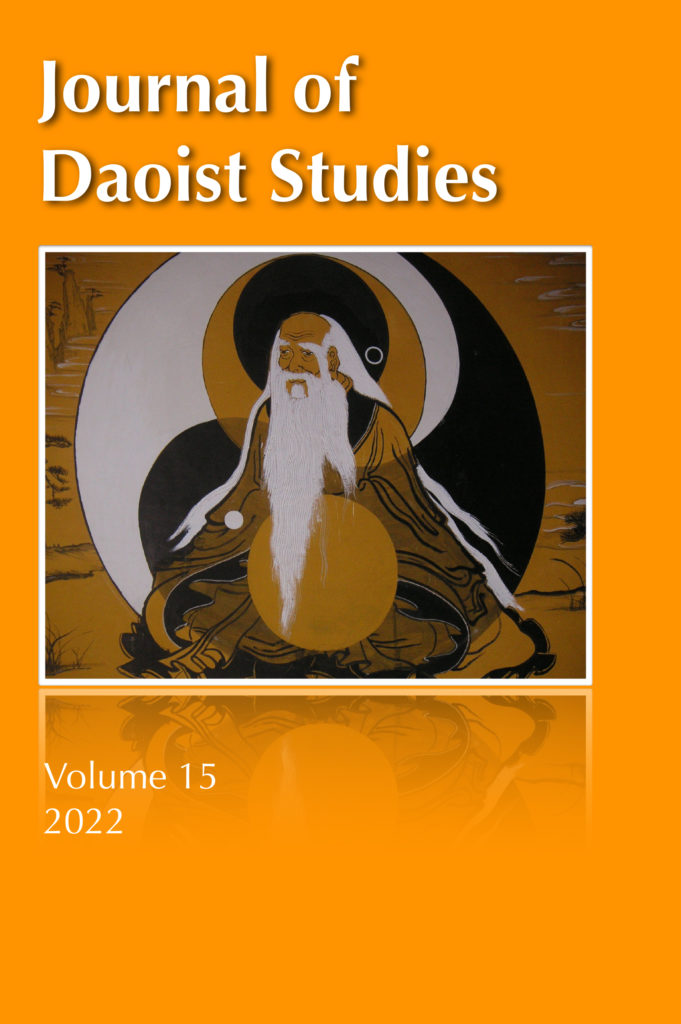
Journal of Daoist Studies
Volume 15 (2022)
The new issue includes the following articles and reviews:
Courting Transcendence: Poetry and Daoism in the Southern Dynasties (420–589)*
Zornica Kirkova
Dreaming of the Female Immortal: Xu Xishen’s Chants on the Paintings of Embracing the True
Yanning Wang
Water as a Symbol of the Great Dao: Literature, Philosophy, Science
Abraham S. Y. Poon
Deepening Perspectives on Spirit
Lonny S. Jarrett
Kang Jeungsan and the Origins of Modern Korean Daoism
Ko Nam-Sik
Daoist Talismans for Healing
Suzy Balliett
Find more research articles and reviews at Project MUSE.
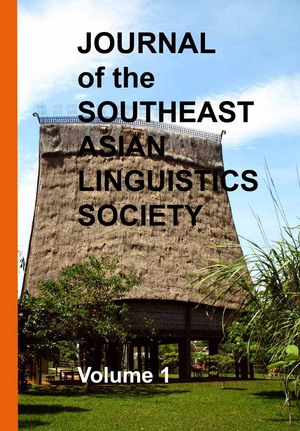
Journal of the Southeast Asian Linguistics Society (JSEALS)
Papers from the 30th Conference of the Southeast Asian Linguistics Society: Special Publication (2021)
The new issue is introduced by Editor in Chief Mark Alves, who states:
The volume contains 21 papers in total: five papers on historical linguistics, eleven papers on syntax and/or morphology, and five papers on phonetics/phonology. The languages covered in this volume are spoken in throughout the greater Southeast Asian region: Mainland Southeast Asia, Insular Southeast Asia, Southern China, and the Indian Subcontinent. The papers range from detailed descriptions of linguistic aspects of understudied languages to probing questions related to multiple groups of languages in the region.
Find more research articles and reviews at eVols.
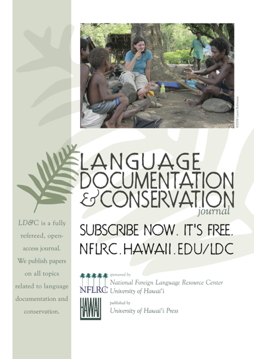
Language, Documentation & Conservation Journal
Volume 15 (2021)
The new issue includes the following articles and reviews:
Between Stress and Tone: Acoustic Evidence of Word Prominence in Kurtöp
Gwendolyn Hyslop
Automatic Speech Recognition for Supporting Endangered Language Documentation
Emily Prud’hommeaux, Robbie Jimerson, Richard Hatcher, and Karin Michelson
Using YouTube as the Primary Transcription and Translation Platform for Remote Corpus Work
Alexander Rice
Collaborative Fieldwork with Custom Mobile Apps
Mat Bettinson & Steven Bird
#KeepOurLanguagesStrong: Indigenous Language Revitalization on Social Media during the Early COVID-19 Pandemic
Kari A. B. Chew
Find more research articles and reviews at ScholarSpace.
New Journal Issues: Schooling Journeys in the Southwestern Pacific, #KuToo Online Feminist Movement in Japan, Geographic Analysis of COVID-19 in L.A. + More

Chinoperl: Journal of Chinese Oral & Performing Literature
Volume 40, Number 2 (2021)
The new issue includes the following articles and reviews:
“Making History”: Metatheatre in the Peach Blossom Fan
Allison Bernard
Find more research articles and reviews at Project MUSE.

The Contemporary Pacific
Volume 22, Issue 2 (2021)
Special Issue: Schooling Journeys in the Southwestern Pacific
From the Guest Editors Rachel Emerine Hicks, Debra McDougall, and David Oakeshott in The Promise of Education: Schooling Journeys in the Southwester Pacific:
“Schooling journeys” is more than a metaphor in the southwestern Pacific. To step into a classroom, children and youth often travel hours each day or live for months at a time away from their families. The journey of schooling is rarely direct; it often winds between formal and informal learning and in and out of school, work, and home life. And the journey is expensive; many families struggle mightily to gather the money for fees, school supplies, uniforms, and transportation. Young people embark on these precarious journeys, and their families make sacrifices to support them, because schooling promises a better life—a move away from the backbreaking labor of subsistence agriculture toward a reliable salary that will better support their family and community. Because of the structural inequalities in school and a lack of jobs for those who complete schooling, however, few experience the socioeconomic advancement schooling promises. Still, students and their families continue to hope that schooling will lead to well-paid work. Even more important, though, going to school is seen as key to being a competent and effective person in society—increasingly for both women and men.

Hawaiian Journal of History
Volume 55 (2021)
The new issue includes the following articles, reviews, notes, and queries:
Aloha Space Age: NASA and the Hawaiian Islands, 1957—1970
David A. Smith
The First Attempt to Overthrow Liliʻuokalani
Ralph Thomas Kam
Dr. Richard You and the Golden Age of Hawaiʻi’s Athletics
John D. Fair
Incarcerating a Nation: The Arrest and Imprisonment of Political Prisoners by the Republic of Hawaiʻi, 1895
Ronald Williams Jr.
Hawaiian Women’s Fashions: Kapa, Cotton and Silk by Agnes Terao-Guiala (review)
Linda Arthur Bradley
Find more research articles, reviews, bibliographies, notes and queries at Project MUSE.

U.S.-Japan Women’s Journal
Volume 60 (2021)
The new issue includes the following articles and reviews:
Yosano Akiko in Belle Époque Paris / ベル・エポックのパリの与謝野晶子
Scott Mehl
Find more research articles and reviews at Project MUSE.
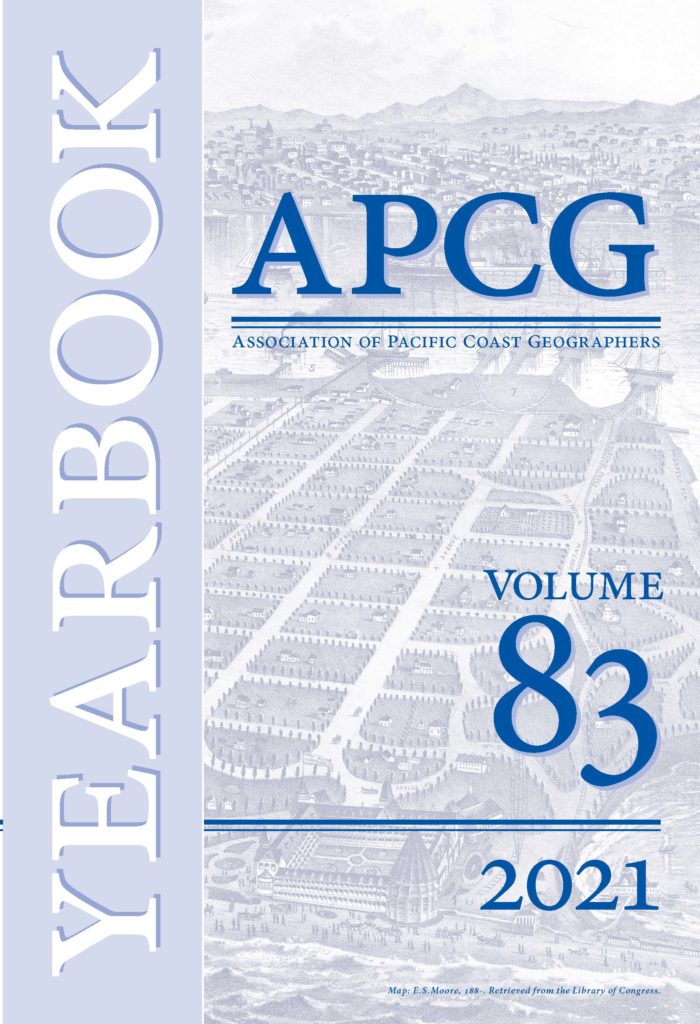
Yearbook of the Association of Pacific Coast Geographers
Volume 83 (2021)
Editor Craig S. Revels reflects over the COVID-19 pandemic and how it has affected geographers and members as he states:
Last year’s volume was published in a time of great uncertainty as the COVID-19 pandemic swept across the world, and this year’s unfortunately arrives under similar conditions, slowly improving though they may be. The tragedies, disruptions, and general state of societal affairs during the pandemic will not soon be forgotten…
Geographers have been at the forefront of research into the spread of COVID-19 since the earliest days of the pandemic, and Steve Graves and Petra Nichols contribute an analytical perspective on infection rates in Los Angeles County. In particular, they statistically identify a causal relationship between infection and a range of key socioeconomic and demographic variables, a relationship influencing the location and rate of spread for the disease. They leave us to consider how those factors must be addressed in any preparations for future public health crises.
In a significantly different context, Ray Sumner and John Menary
demonstrate that taking students into the field, always a valuable exercise, is even more rewarding when it leads to unexpected discoveries and challenges our carefully laid plans. In this case, a straightforward field methods class oriented around the Los Angeles River instead became an open-ended, student-driven exploration into the social dimensions of heritage, ethnicity,
culture, and urban development.
New Journal Special Features: Gender Trouble in Korean Literature, Unsettling Korean Migration + Biography forum on Behrouz Boochani
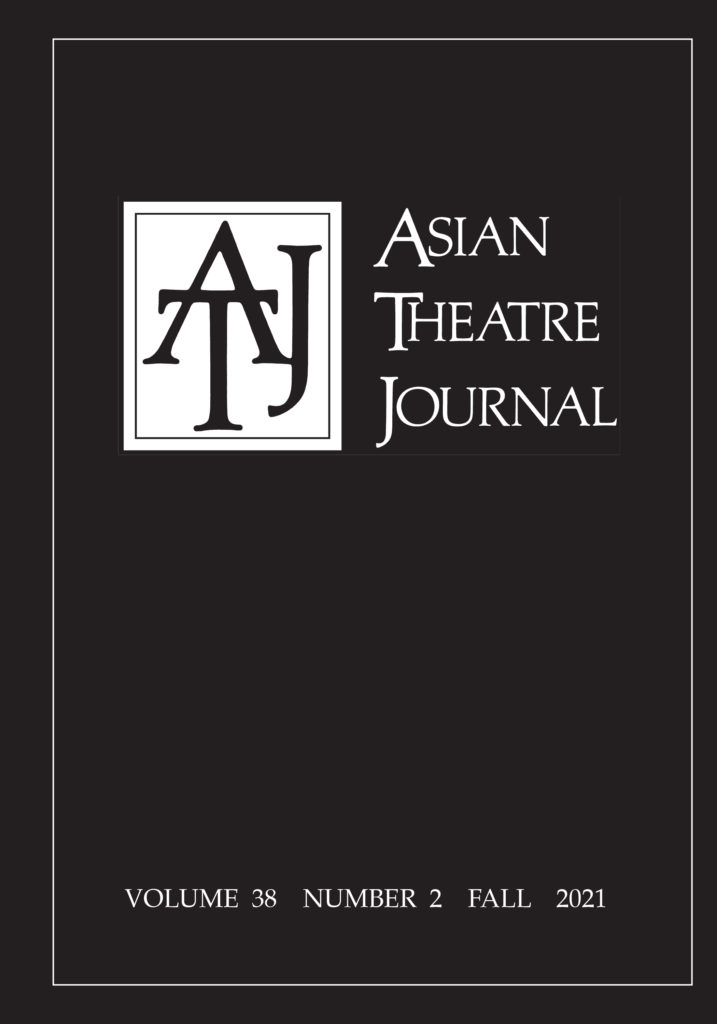
Asian Theatre Journal
Volume 38, Number 2 (2021)
The new issue includes the following articles and reports:
Raktim Pariwar’s Red Lanterns: Dance and Cultural
Revolution in Nepal
Anna Marie Stirr
The Tokyo Festival World Competition 2019
Cody Poulton
Find more research articles, reports, and reviews at Project MUSE.
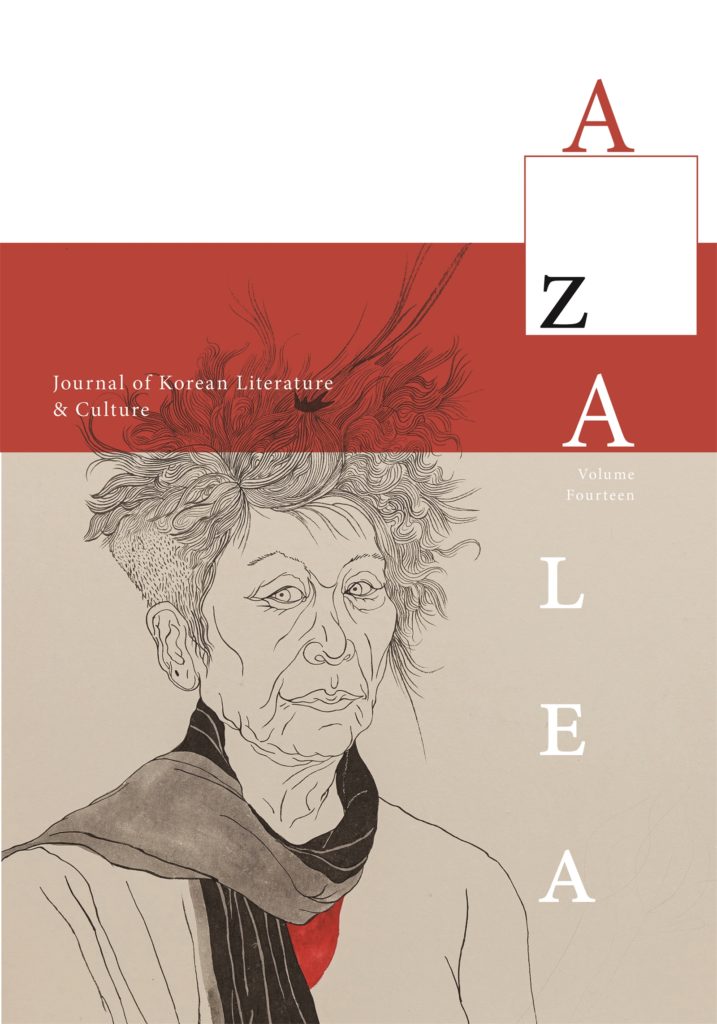
Azalea: Journal of Korean Literature & Culture
Volume 14 (2021)
Special Feature: Korean Genre Fiction; O Chang-hwan; and Gender Trouble In Korean Literature
From the Editor Young Jung-Lee:
One of the most important recent shifts in Korean literature is found in gender conflict. This “Special Feature: Gender Trouble in Korean Literature and Society,” guest-edited by Hye-Ryoung Lee, shows a fundamentally new perspective through six scholars reading Korean Literature and Society. Over the past decade, the #MeToo Movement has shaken the world, and Korean society has been no exception, as can be seen in Choi Young-mi’s poem “En,” introduced here with six critical essays. Even before its publication, “En” was the focus of media attention, and it remained a hot topic in Korean society for years due to Choi’s high-profile court battles.
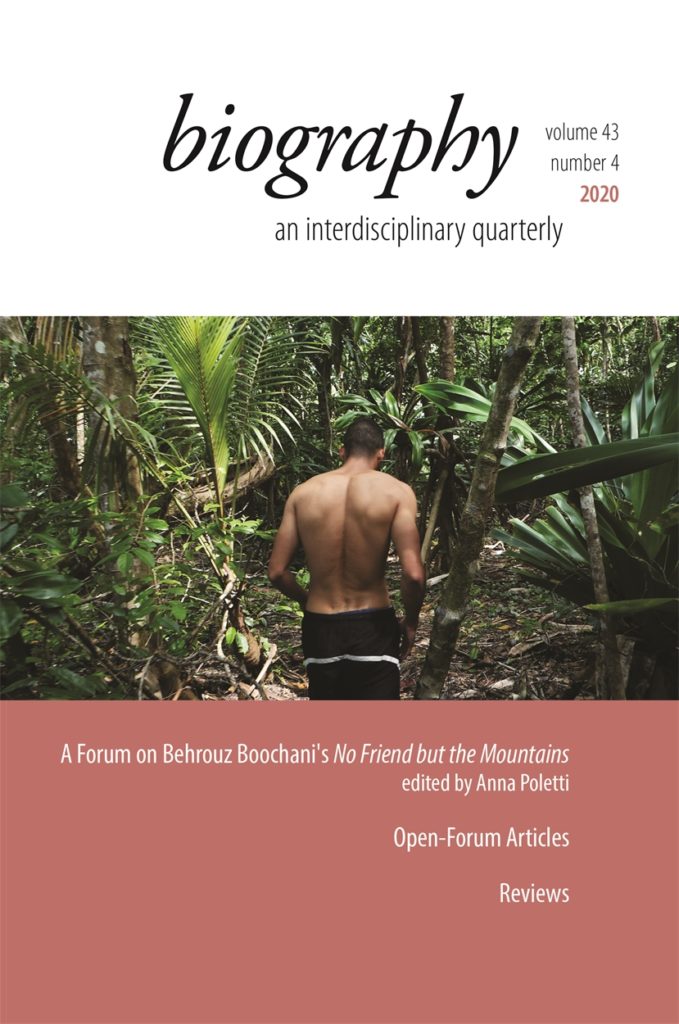
biography
Volume 43, Number 4 (2020)
Special Feature: A Forum on Behrouz Boochani’s No Friend but the Mountains
From Coeditor Anna Poletti:
With this forum, we, the editors of Biography, inaugurate a new feature of the journal that aims to respond to and amplify specific examples of the power of life writing as a cultural, political, and social practice, and which document key moments in the evolution of that practice. In this forum, No Friend but the Mountains is discussed as both a profoundly localized text responding to, making knowledge about, and exposing a highly specific and complex set of conditions, and as a uniquely transnational text that speaks to and about a global phenomenon. Its highly innovative use of life writing as a narrative technique and epistemological practice warranted, in our minds, a concentrated response from the journal. Commissioning and editing this response has renewed my appreciation for the primary concerns of lifewriting scholarship: tracking the mercurial power of personal storytelling to crystalize the contemporary moment in such a way that new knowledge emerges from the entanglements it depicts, and the entanglements it drags its readers into.
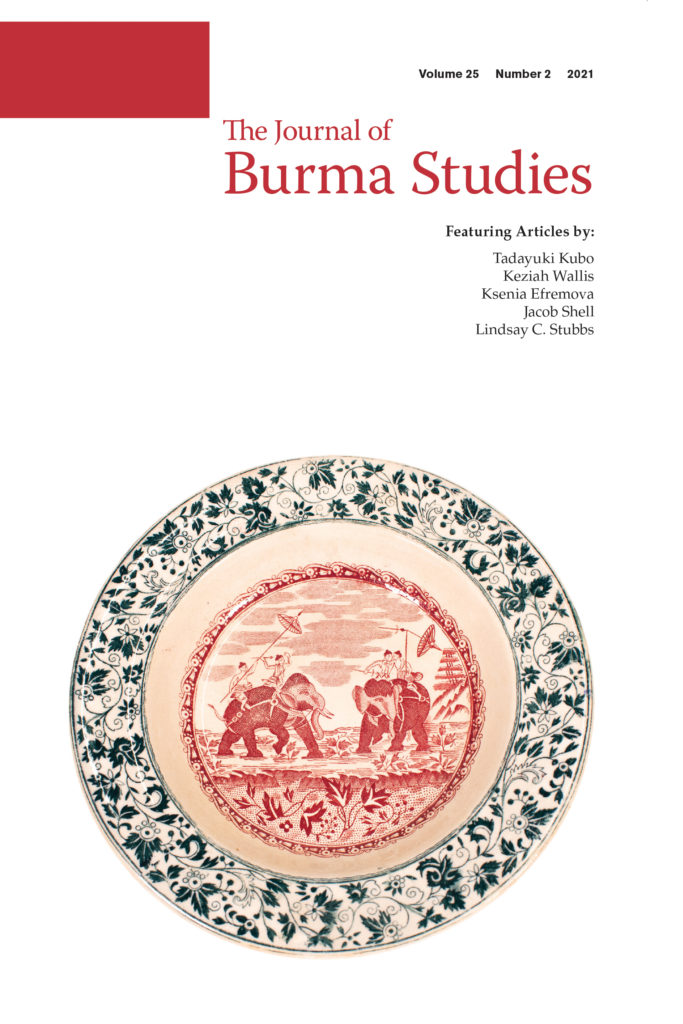
The Journal of Burma Studies
Volume 25, Number 2 (2021)
The new issue includes the following articles:
Ethnocentrism or National Reconciliation: Rethinking
Ethnic Relations and the History of Karenni
Tadayuki Kubo
Nats in the Land of the Hintha: Village Religion
in Lower Myanmar
Keziah Wallis
Elephant Riders of the Hukawng Valley, Kachin State:
Evasive Mobility and Vadological Geography
Jacob Shell
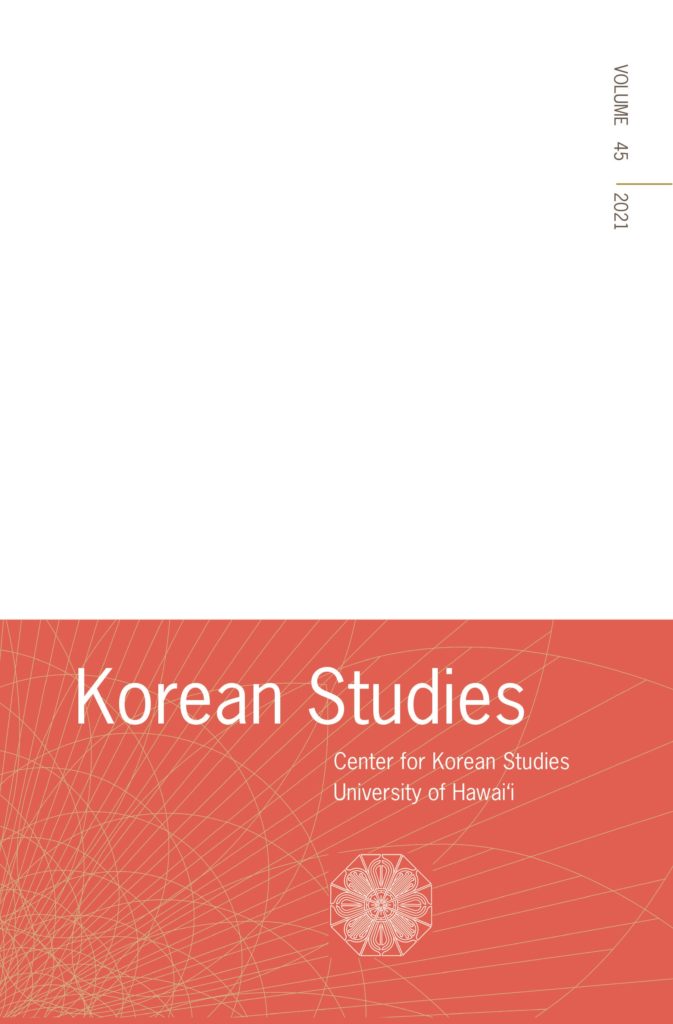
Korean Studies
Volume 45 (2021)
Special Section: Unsettling Korean Migration: Multiple Trajectories and Experiences
From the Editor Cheehyun Harrison Kim:
This analytic potency of migration is superbly demonstrated in this volume’s Special Section Unsettling Korean Migration: Multiple Trajectories and Experiences, guest edited by Sunhee Koo (The University of Auckland) and Jihye Kim (The University of Central Lancashire). Sunhee Koo and Jihye Kim have brought together papers on labor (Yonson Ahn and Jihye Kim), ritual life (Marcus Bell), cultural identity (Sunhee Koo), and artistic production (Hee-seung Irene Lee and Soojin Kim). The six engrossing articles deal with how the Korean diaspora—in Argentina, Germany, Japan, China, and the United States—have shaped and represented their particular situations through negotiation, resilience, and creativity. The authors are highly critical of any national framework, and they see diasporic life as contexts of not only sorrow and sacrifice but also innovation and regeneration. Sunhee Koo and Jihye Kim offer a detailed explanation in their Introduction.
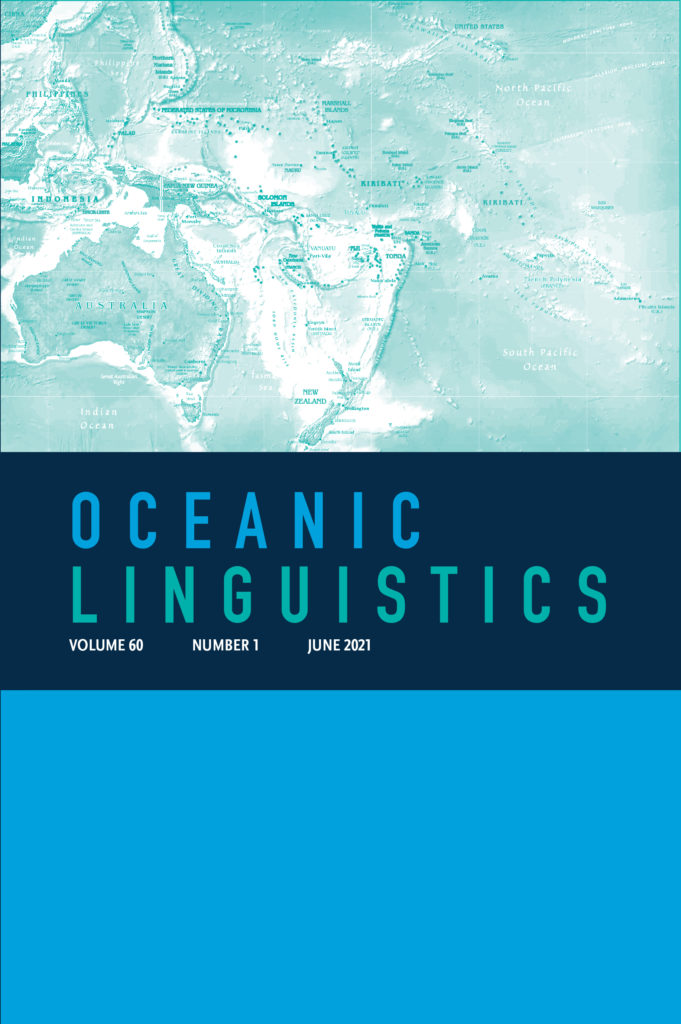
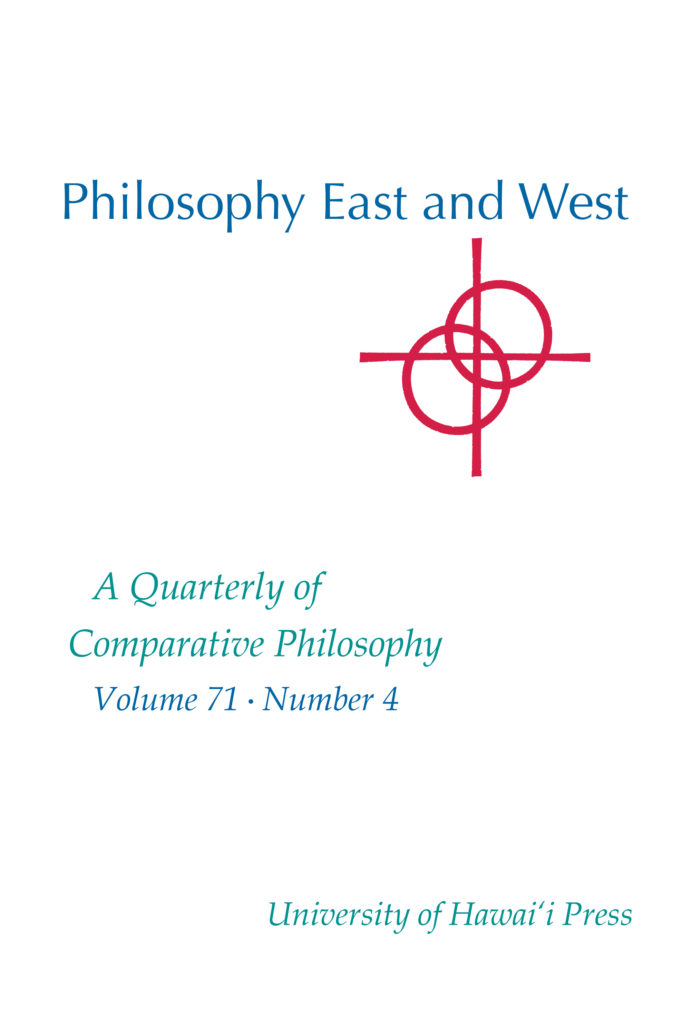
Oceanic Linguistics
Volume 60, Number 1 (2021)
The new issue includes the following articles:
Avaipa, a Language of Central Bougainville
Jason Brown,Melissa Irvine
East Polynesian Subgrouping and Homeland Implications Within the Northern Outlier–East Polynesian Hypothesis
William H. Wilson
Toward a Comparative Typology of ‘Eating’ in Kanak Languages
Anne-Laure Dotte, Claire Moyse-Faurie
Find more research articles and reviews at Project MUSE.
Philosophy East and West
Volume 71, Number 4 (2021)
The new issue included the following articles and translations:
Jian’Ai: Considerations From the “Greater Selection”
Susan Blake
Patterning the Myriad Things: Holism, Harmony, and Anthropogenic Influence in the Huainanzi
Matthew Hamm
Confucianism and Totalitarianism: An Arendtian Reconsideration of Mencius versus Xunzi
Lee Wilson
“America’s National Character” by Watsuji Tetsurō: A Translation
Kyle Michael James Shuttleworth, Sayaka Shuttleworth, Watsuji Tetsurō
Find more research articles, translations, and reviews at Project MUSE.
Celebrating Buwan ng Wikang Pambansa (Philippines National Language Month)

20% OFF ON THESE SELECT TITLES
FIND OPEN ACCESS PHILIPPINES LANGUAGE TEXTS AND JOURNALS BELOW!
China Review International Vol. 25 No. 1 (2018)
Volume 25 Number 1 of China Review International begins with one feature review and 23 more reviews of scholarly literature in Chinese Studies.
Featured Review:
When Fish Were Fish
Christopher Rea
Reviews:
Poetic Transformations: Eighteenth-Century Cultural Projects on the Mekong Plains by Claudine Ang (review)
Reviewed by Eric Henry
Worüber man nicht spricht: Tabus, Schweigen und Redeverbote in China ed. by Rüdiger Breuer and Heiner Roetz (review)
Reviewed by Anna Stecher
GMO China: How Global Debates Transformed China’s Agricultural Biotechnology Policies by Cong Cao (review)
Reviewed by Nancy N. Chen
Morality and Monastic Revival in Post-Mao Tibet by Jane E. Caple (review)
Reviewed by Nicole Willock
Qing Travelers to the Far West: Diplomacy and the Information Order in Late Imperial China by Jenny Huangfu Day (review)
Reviewed by Bradley Camp Davis
That Distant Country Next Door: Popular Japanese Perceptions of Mao’s China by Erik Esselstrom (review)
Reviewed by Lu Yan
Song King: Connecting People, Places, and Past in Contemporary China by Levi S. Gibbs (review)
Reviewed by Charlotte D’Evelyn
Farewell to the God of Plague: Chairman Mao’s Campaign to Deworm China by Miriam Gross (review)
Reviewed by Robert Peckham
The Silk Road Trap: How China’s Trade Ambitions Challenge Europe by Jonathan Holslag (review)
Reviewed by Min Ye
Efficacious Underworld: The Evolution of Ten Kings Paintings in Medieval China and Korea by Cheeyun Lilian Kwon (review)
Reviewed by Beatrix Mecsi
Becoming Bilingual in School and Home in Tibetan Areas of China: Stories of Struggle YiXi LaMuCuo (review)
Reviewed by Norbert Francis
Chinese Poetic Modernisms ed. by Paul Manfredi and Christopher Lupke (review)
Reviewed by Joseph R. Allen
Just a Song: Chinese Lyrics from the Eleventh and Early Twelfth Centuries by Stephen Owen (review)
Reviewed by Lanlan Kuang
China’s Chaplin: Comic Stories and Farces by Xu Zhuodai (review)
Reviewed by Zheyu Wei
Afterlives of Chinese Communism: Political Concepts from Mao to Xi ed. by Christian Sorace, Ivan Franceschini, and Nicholas Loubere (review)
Reviewed by Aaron Su
Fruit from the Sands: The Silk Road Origins of the Foods We Eat by Robert N. Spengler III (review)
Reviewed by Shiamin Kwa
The Dreaming Mind and the End of the Ming World by Lynn A. Struve (review)
Reviewed by Harry Miller
Asia Inside Out: Itinerant People ed. by Eric Tagliacozzo, Helen F. Siu, and Peter C. Perdue (review)
Reviewed by Ronald Skeldon
Public Goods Provision in the Early Modern Economy: Comparative Perspectives from Japan, China, and Europe ed. by Masayuki Tanimoto and R. Bin Wong (review)
Reviewed by Guillaume Carré
Raising China’s Revolutionaries: Modernizing Childhood for Cosmopolitan Nationalists and Liberated Comrades, 1920s–1950s by Margaret Mih Tillman (review)
Reviewed by Stig Thøgersen
Christian Women in Chinese Society: The Anglican Story ed. by Wai Ching Angela Wong and Patricia P. K. Chiu (review)
Reviewed by Fredrik Fällman
Maoist Laughter ed. by Ping Zhu, Zhuoyi Wang, and Jason McGrath (review)
Reviewed by Richard King
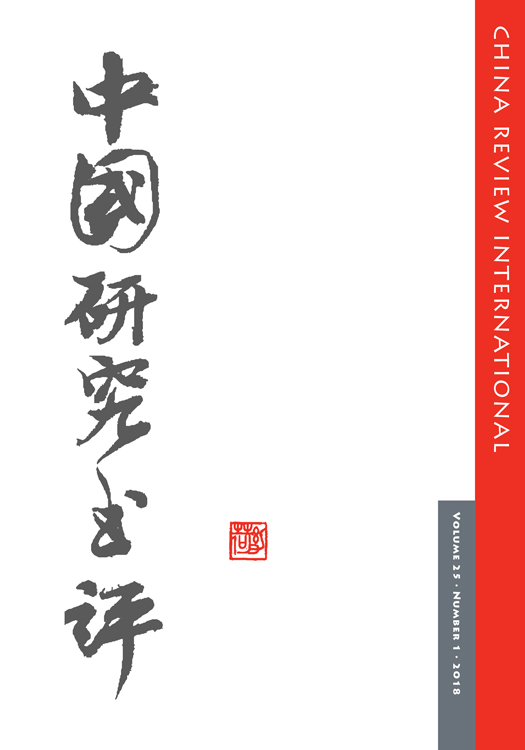
Vol. 25 No. 1
2018
Celebrating Asian / Pacific American Heritage Month with Free Journal Content
We are proud to publish an extensive list of Pacific, Asian, and Southeast Asian studies journals. This Asian / Pacific American Heritage Month, explore and enjoy the following free journal content online:
Open Access Journals:
Asian/Pacific Island Nursing Journal
Journal of the Southeast Asian Linguistics Society
Language Documentation & Conservation
Palapala: a journal of Hawaiian language and literature
Free journal content online:
Asian Perspectives: The Journal of Archaeology for Asia and the Pacific (46#1, 2007)
Asian Theatre Journal: Official Journal of the Association for Asian Performance (23#1, 2006)
Azalea: Journal of Korean Literature and Culture (1, 2007)
Buddhist-Christian Studies: Official Journal of the Society for Buddhist-Christian Studies (27, 2007)
China Review International: Reviews of Scholarly Literature in Chinese Studies (15#1, 2008)
The Contemporary Pacific: A Journal of Island Affairs (15#1, 2003)
Cross-Currents: East Asian History and Culture Review (3#1, 2014)
The Hawaiian Journal of History (49, 2015)
Journal of Daoist Studies (8, 2015)
Journal of Korean Religions (6#1, 2015)
Korean Studies: A Multidisciplinary Journal on Korea and Koreans Abroad (29, 2005)
MĀNOA: A Pacific Journal of International Writing: New Writing from America, the Pacific, and Asia (19#1, 2007)
Oceanic Linguistics: Current Research on Languages of the Oceanic Area (50#2, 2011)
Pacific Science: Biological and Physical Sciences of the Pacific Region (71#4, 2017)
Philosophy East & West: A Quarterly of Comparative Philosophy (53#3, 2007)
Rapa Nui Journal: The journal of the Easter Island Foundation (30#2, 2016)
Review of Japanese Culture and Society (24, 2012)
U.S.–Japan Women’s Journal (45, 2013)
I Ulu I Ka Aina Book Launch at Na Mea Hawaii
Aloha friends! Please join us at Native Books/Nā Mea Hawai‘i on Sunday, December 8 from 2 to 4 pm for the official launch of I Ulu I Ka ‘Āina, the second volume in the Hawai‘inuiākea series. Enjoy short readings by editor Jonathan Osorio and other contributors, music by Tuahine Serenaders, and light refreshments. For more details, visit the Hawai‘inuiākea School of Hawaiian Knowledge website.
UHM First Annual Filipino Books and Curriculum Fair
In recognition of Filipino American History Month, the 1st Annual Filipino Books & Curriculum Fair will be held at the UHM College of Education on Tuesday, October 29, 1:30 to 4:00pm. Come by Wist Hall 133 and visit our display, as well as that of UH Bookstore and 15 other exhibitors.
Titles that we’ll be showing and taking orders for include language books by Teresita Ramos and Precy Espiritu, novels by José Rizal, and a sampling from distributed publishers Ateneo de Manila University Press and the University of the Philippines Press — the former is the publisher of Patricio Abinales’ Making Mindanao and Orthodoxy and History in the Muslim Mindanao Narrative. Works by Filipino American writers include Peter Bacho’s Entrys and Gabe Baltazar’s If It Swings, It’s Music and interviews of Jessica Hagedorn and Al Robles are featured in Words Matter: Conversations with Asian American Writers. Our display will also show books on the Hawai‘i plantation experience, for example, Tomorrow’s Memories: A Diary, 1924–1928 by Angeles Monrayo.
For more information, click here.






